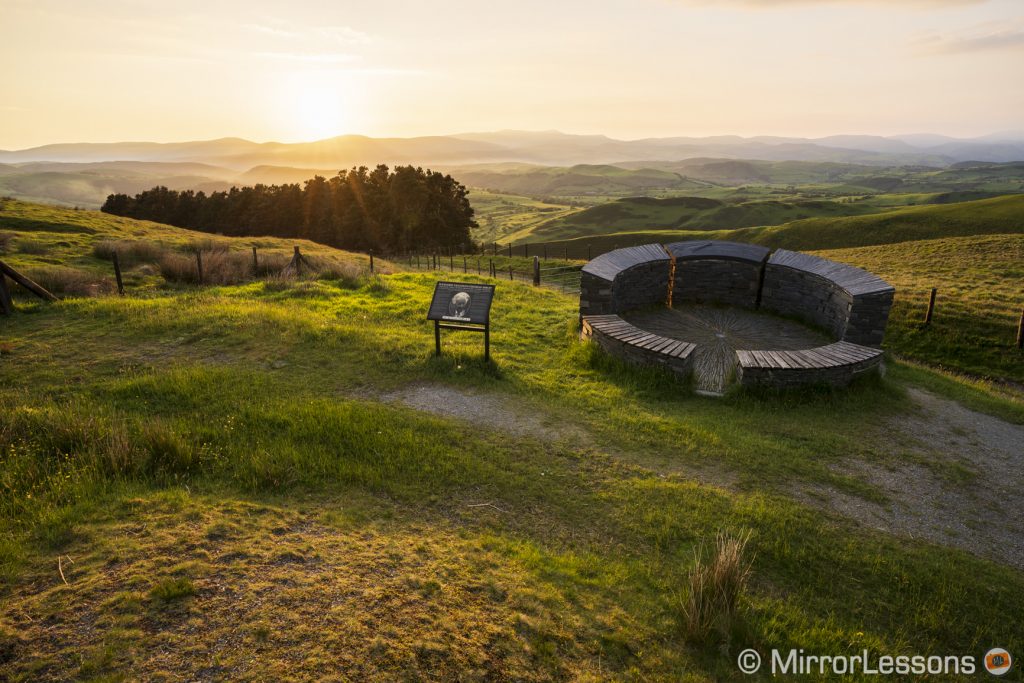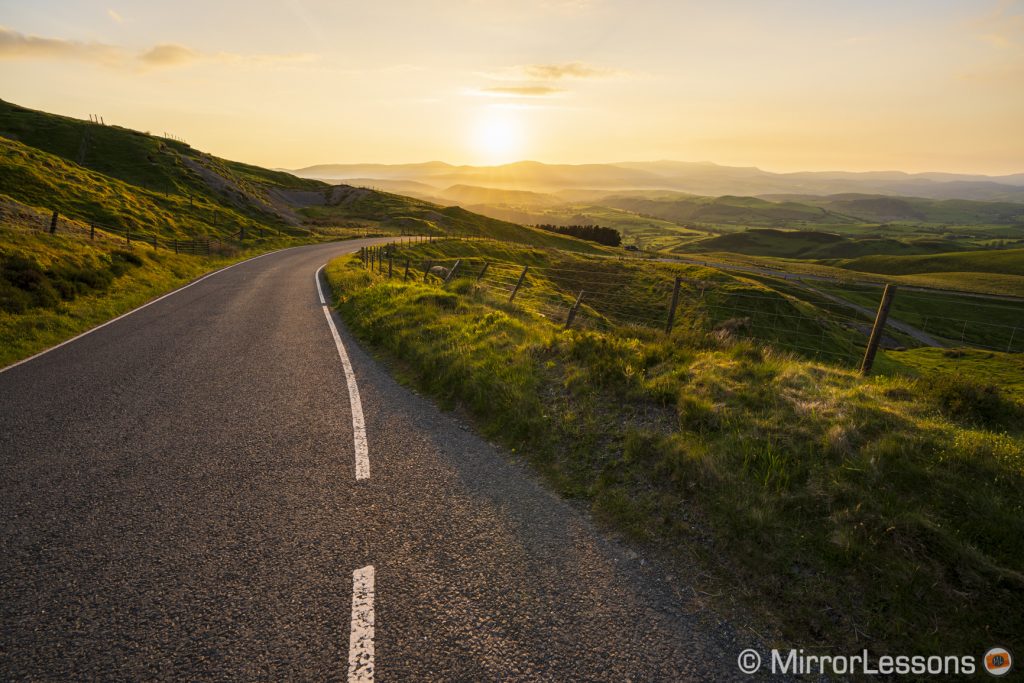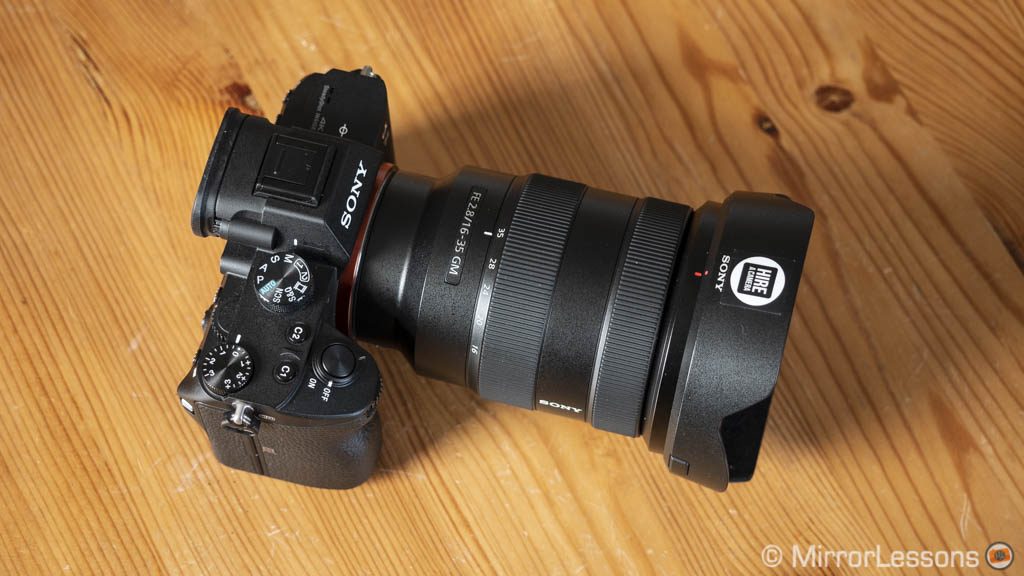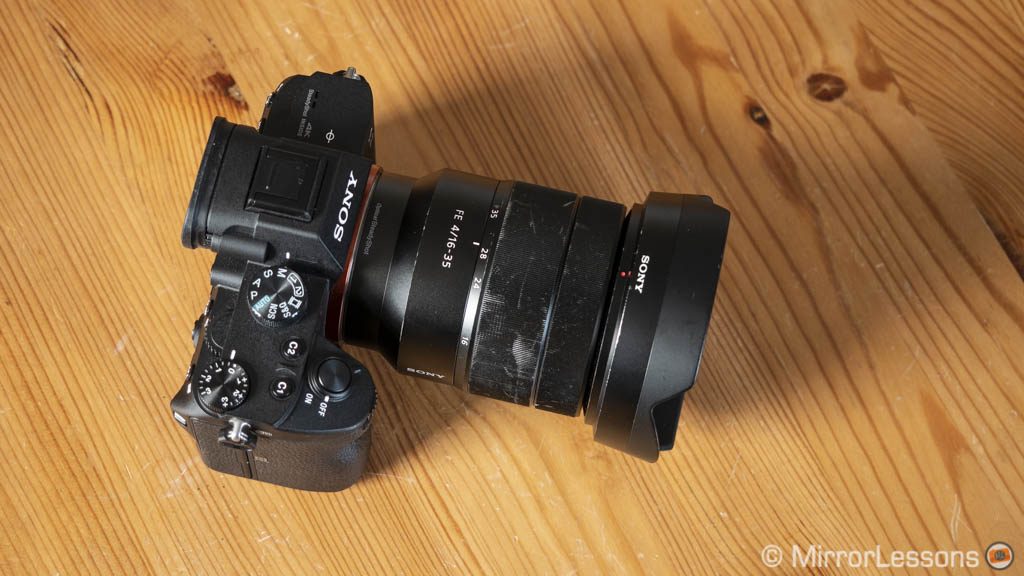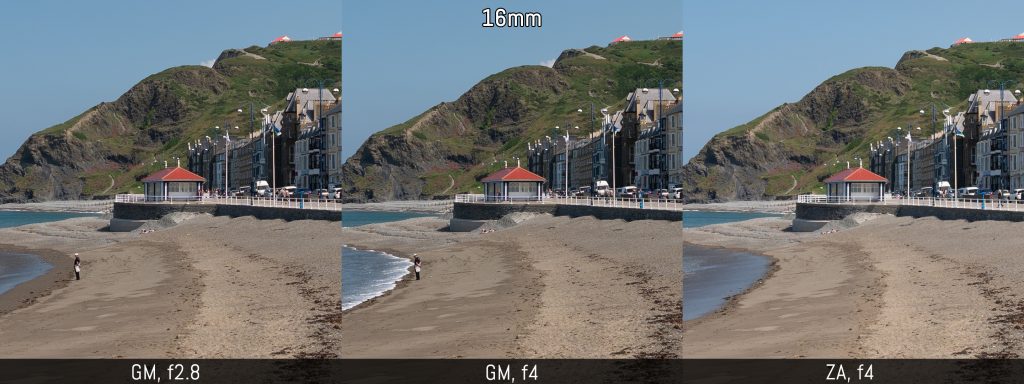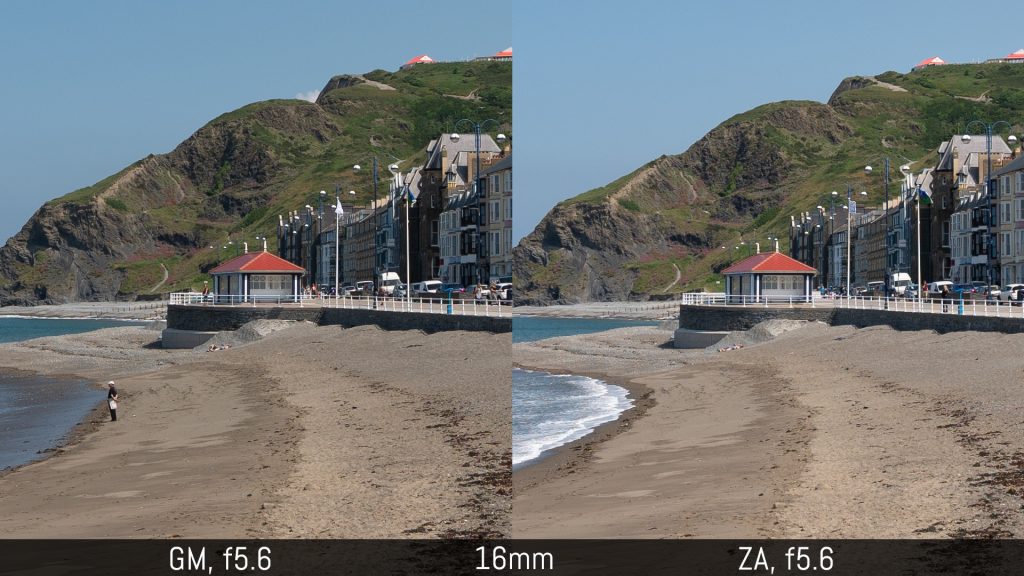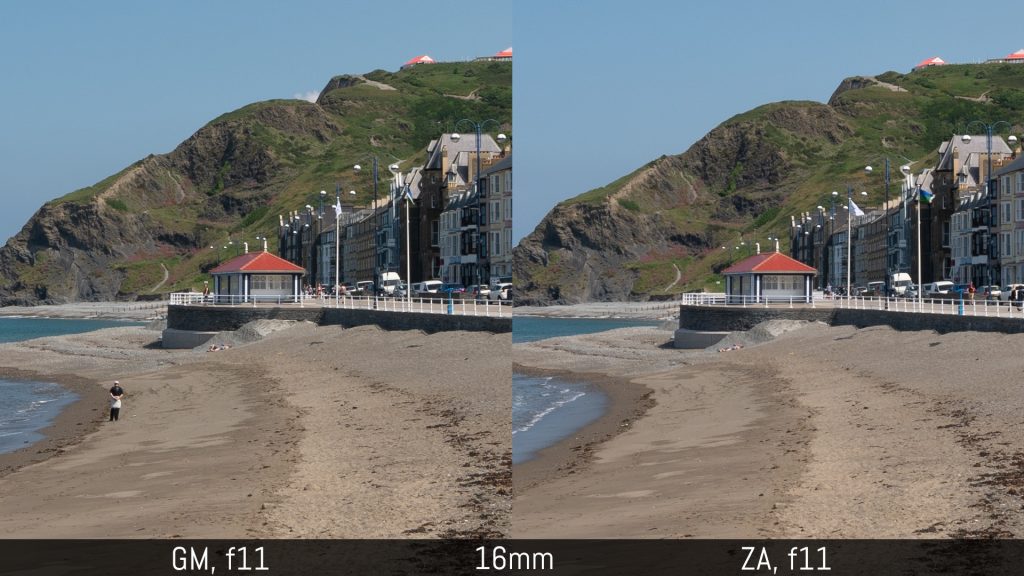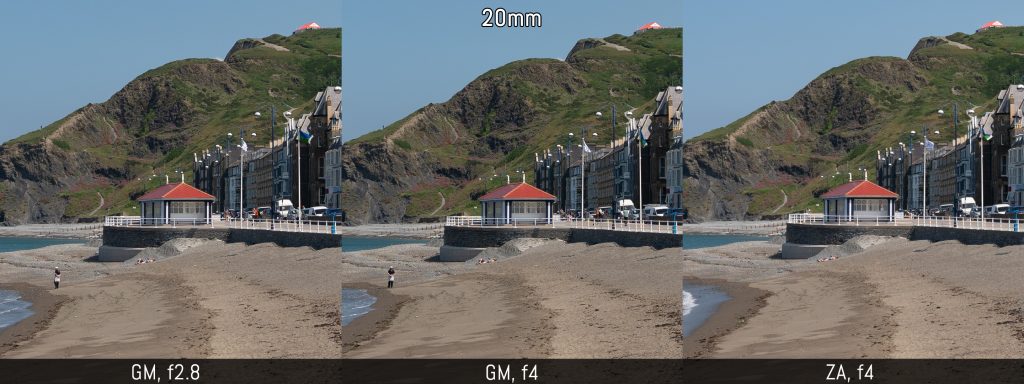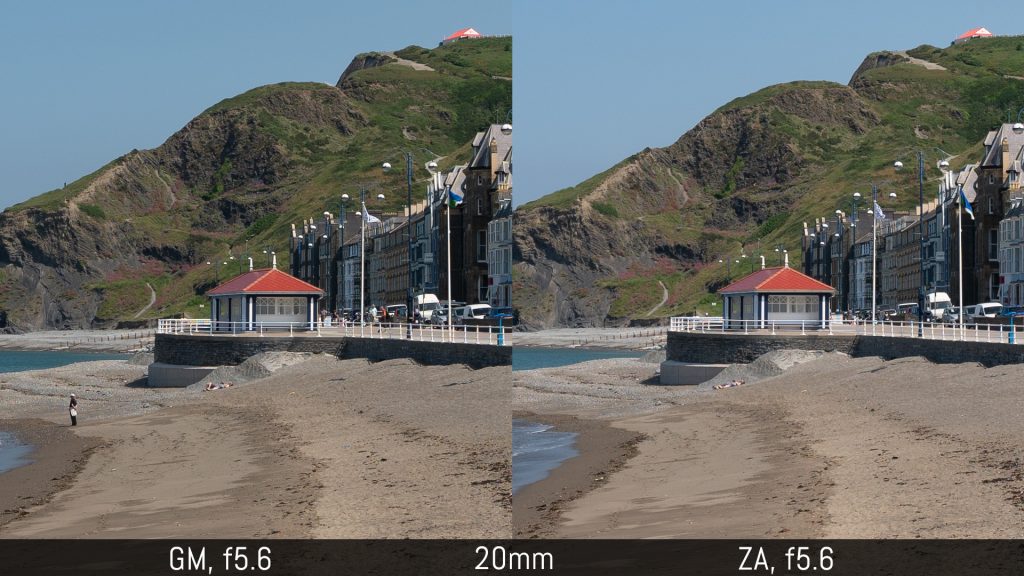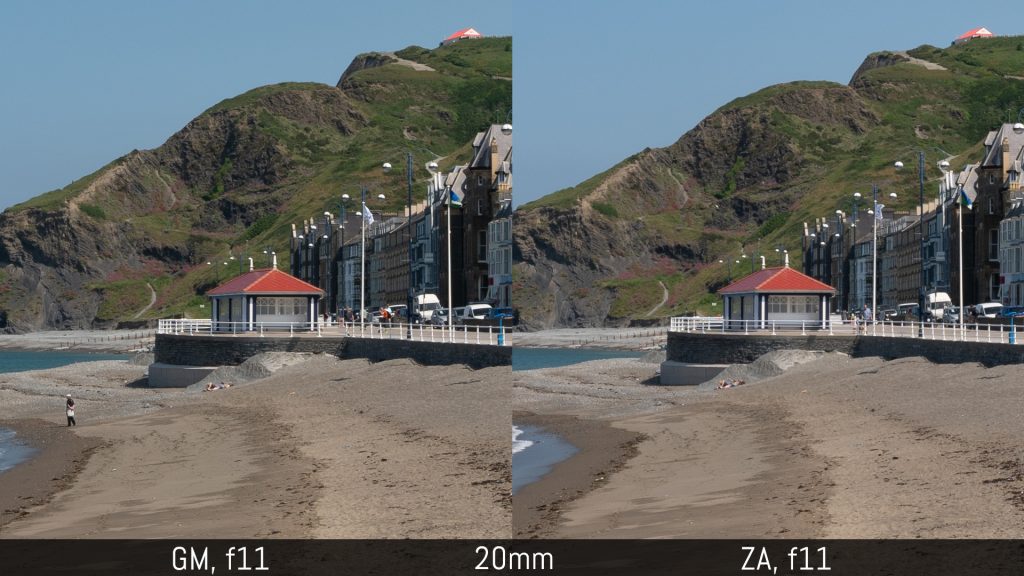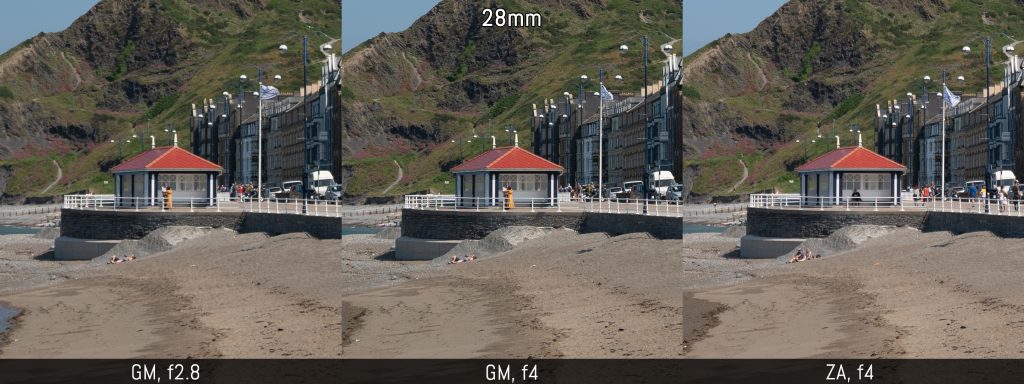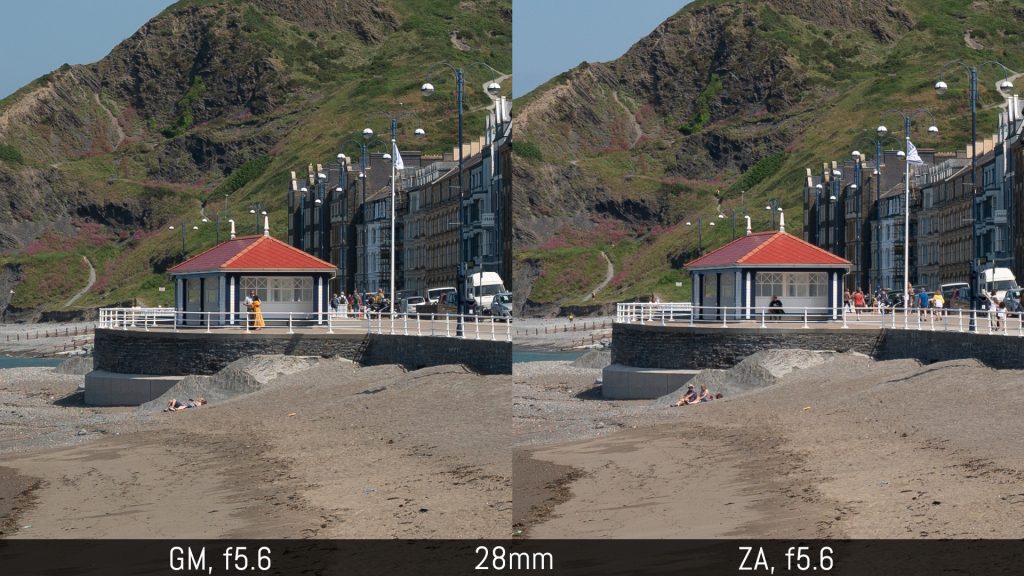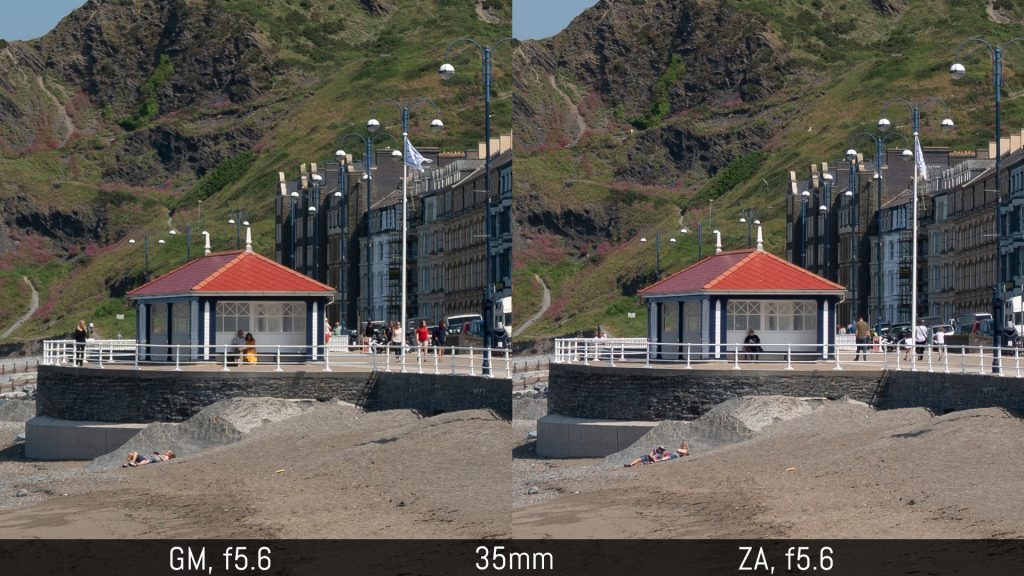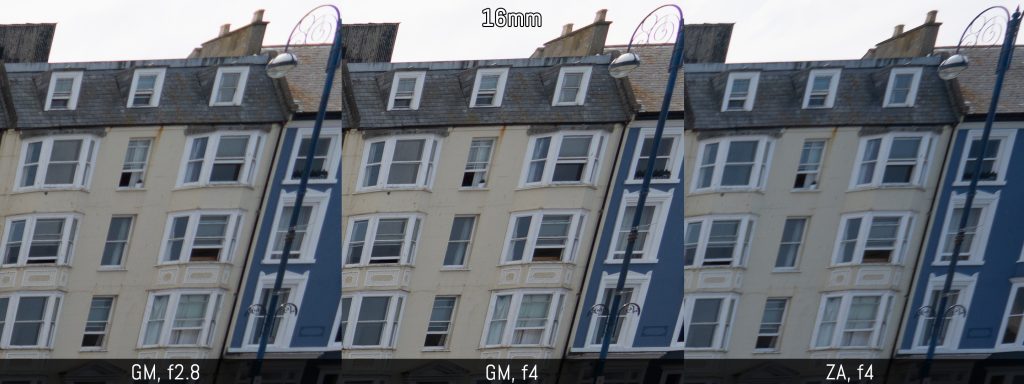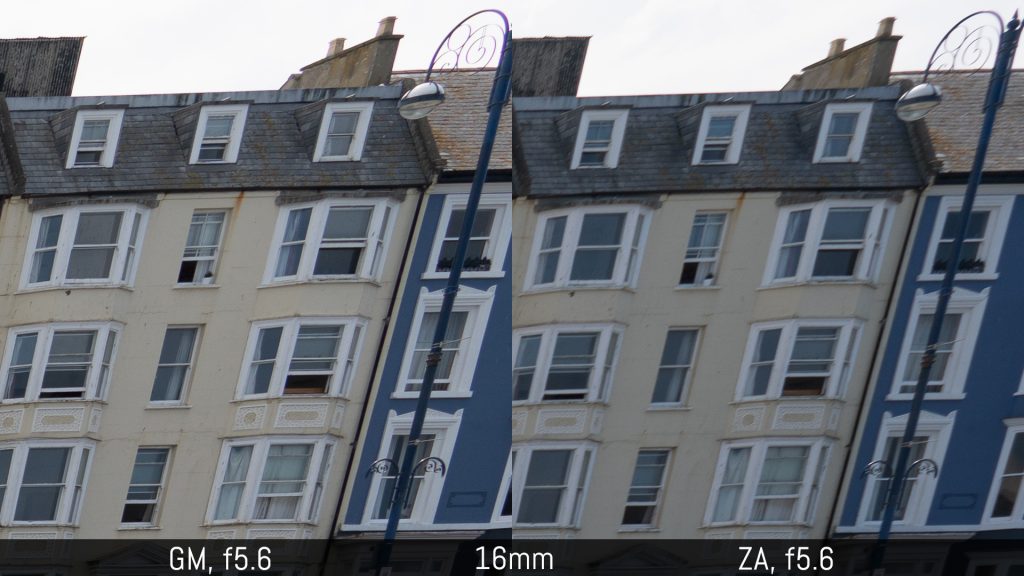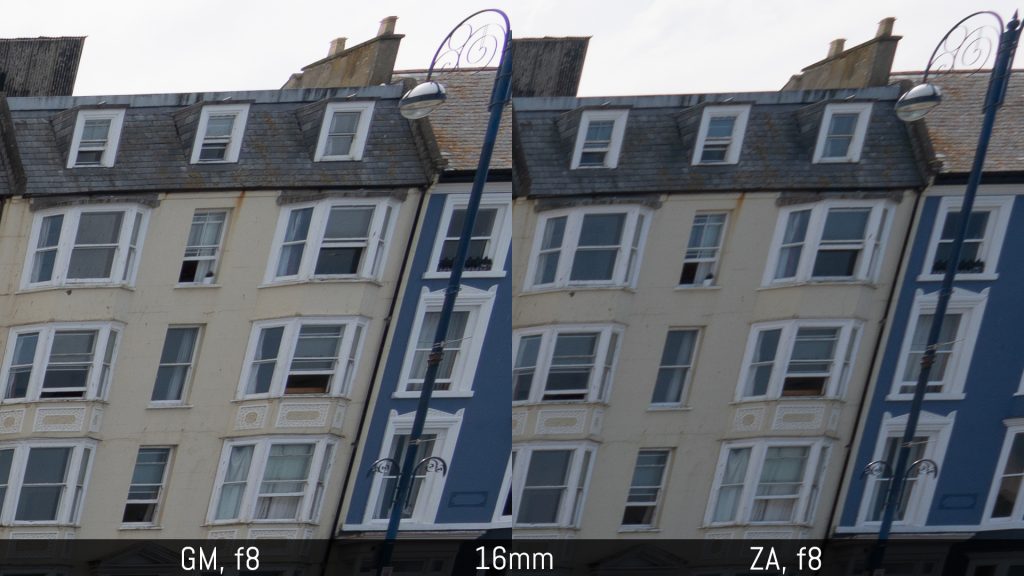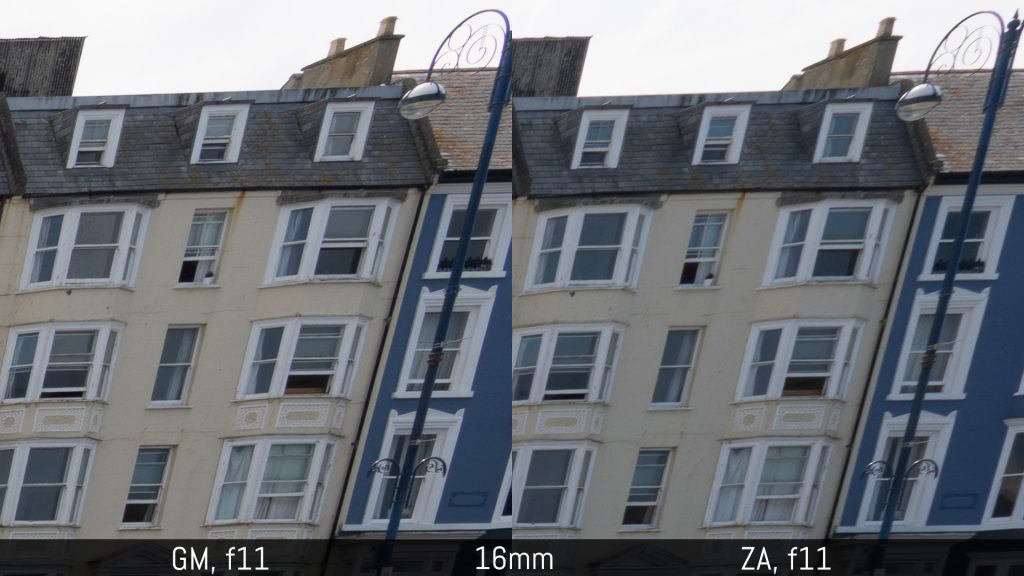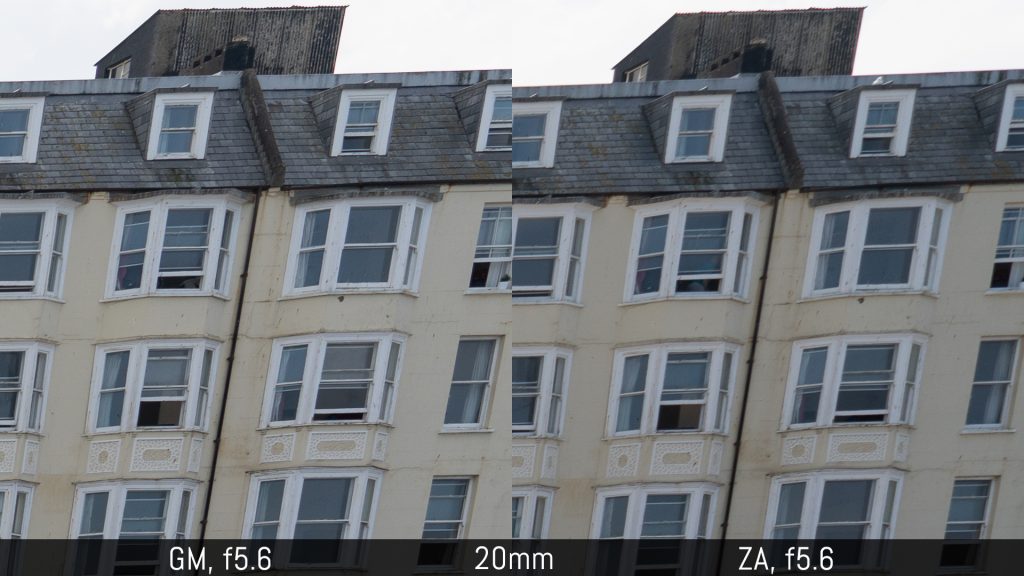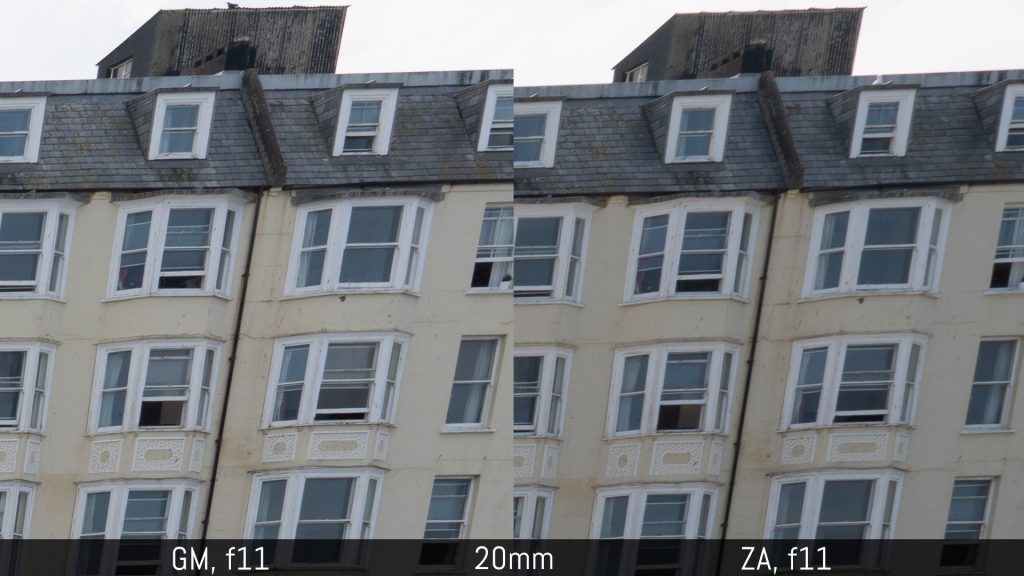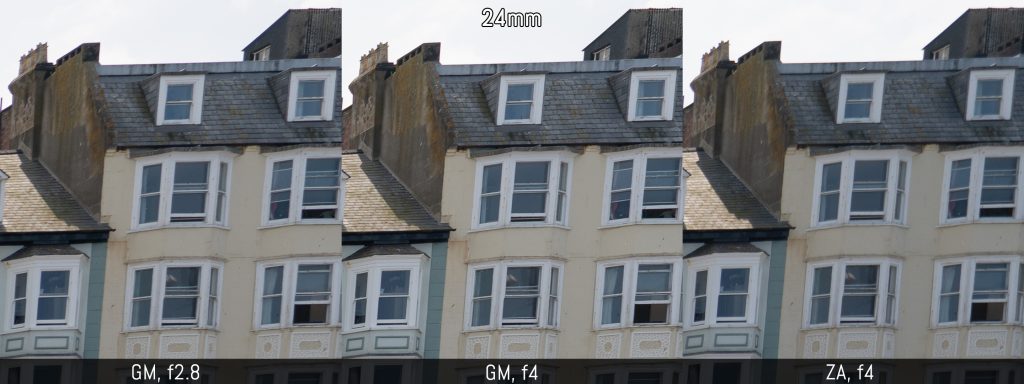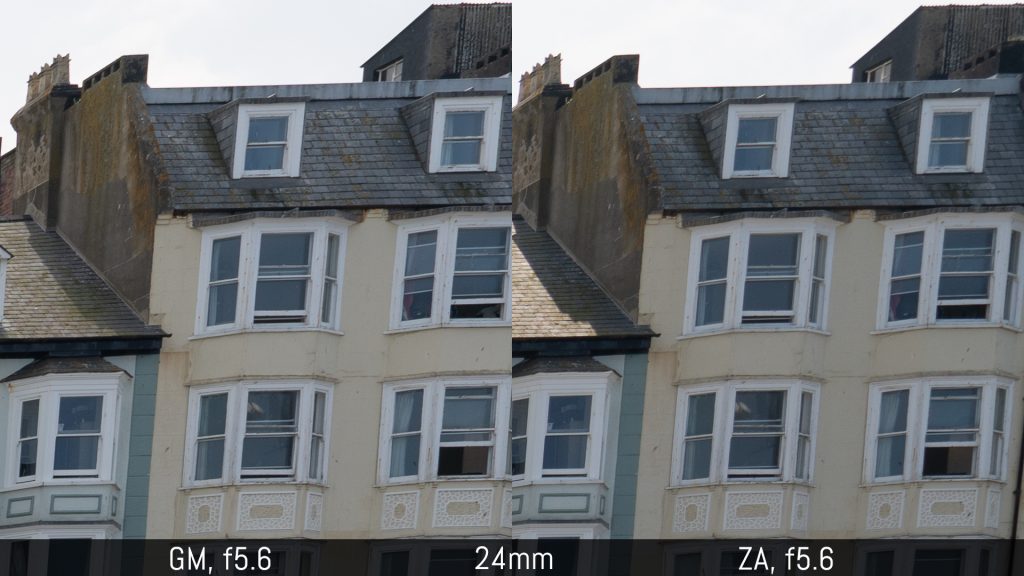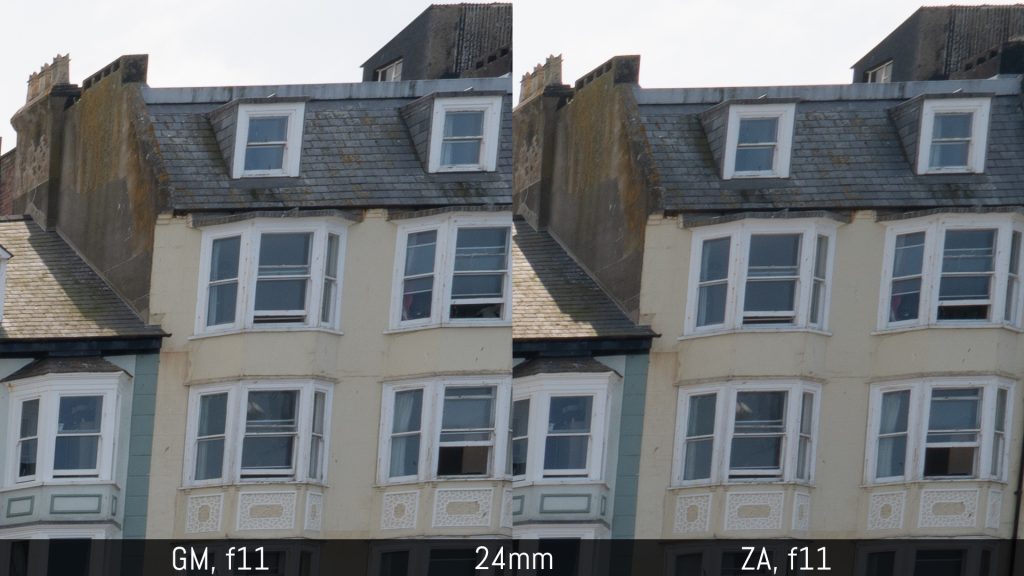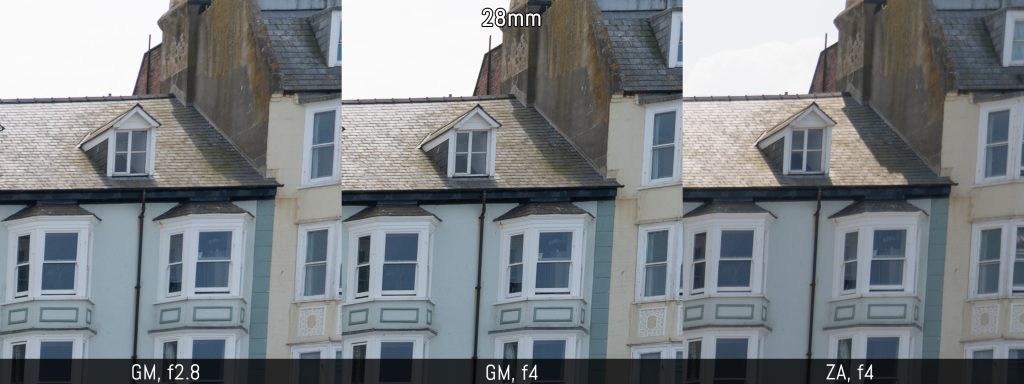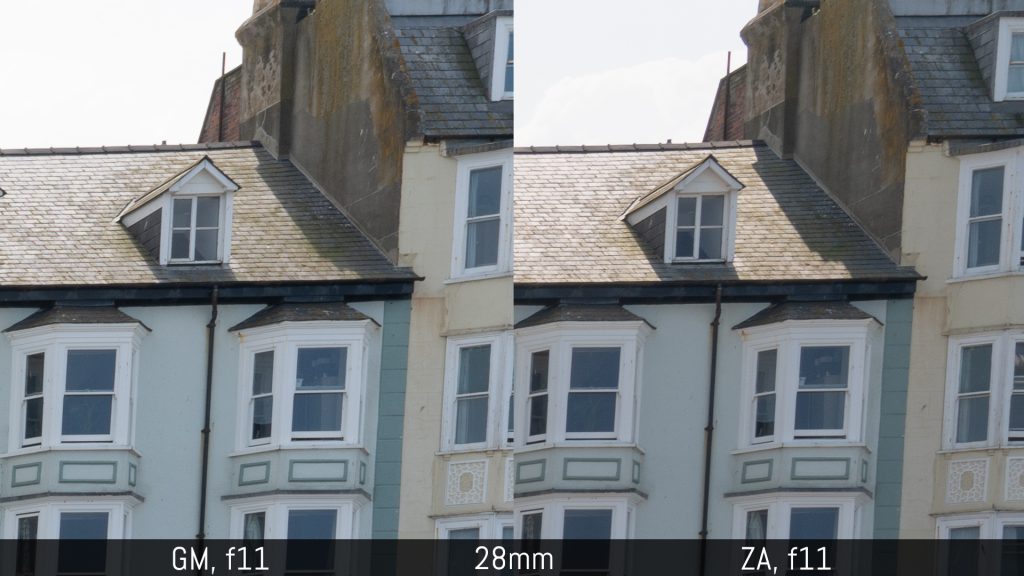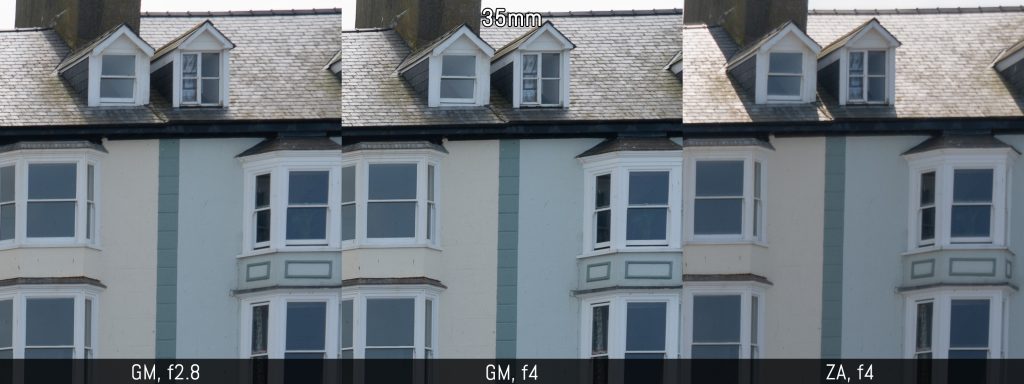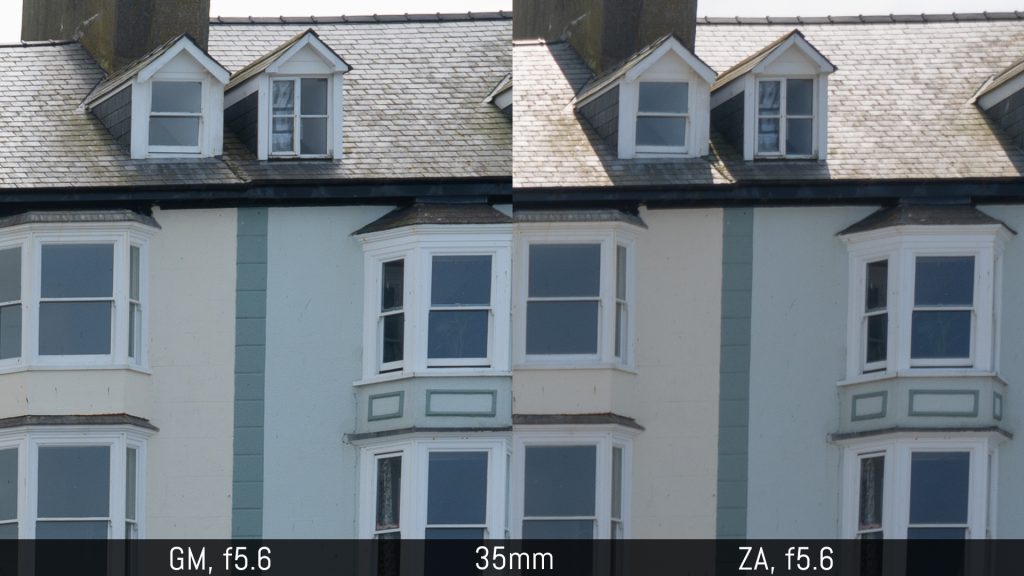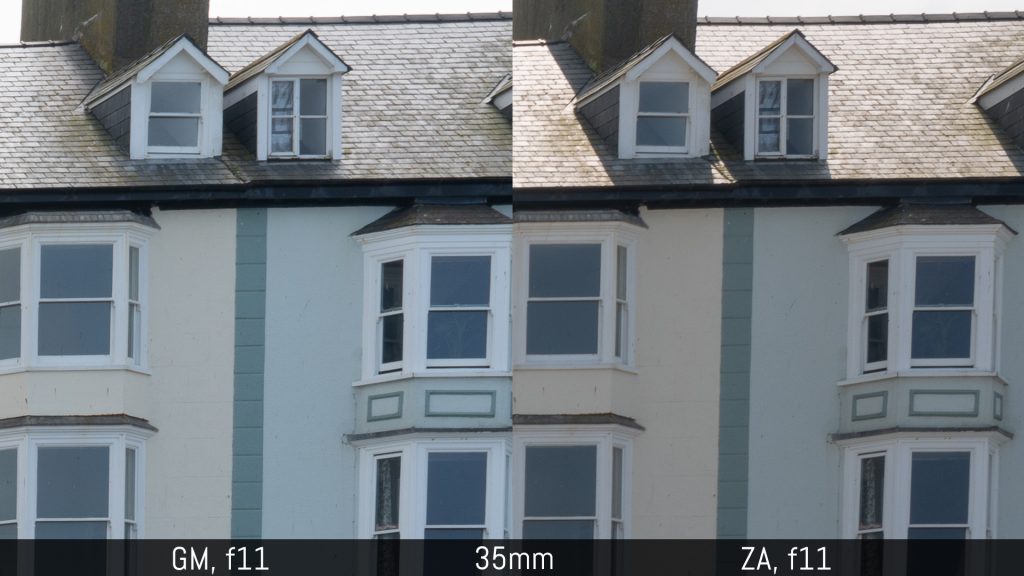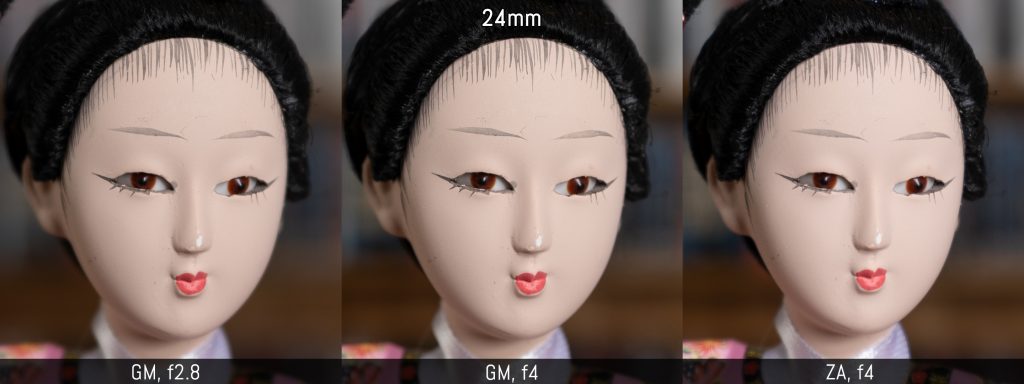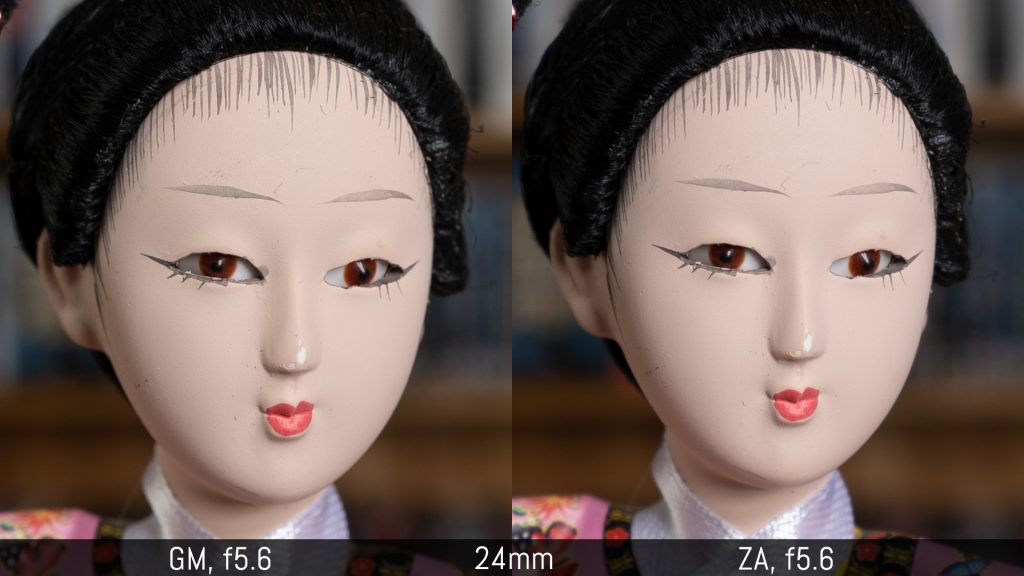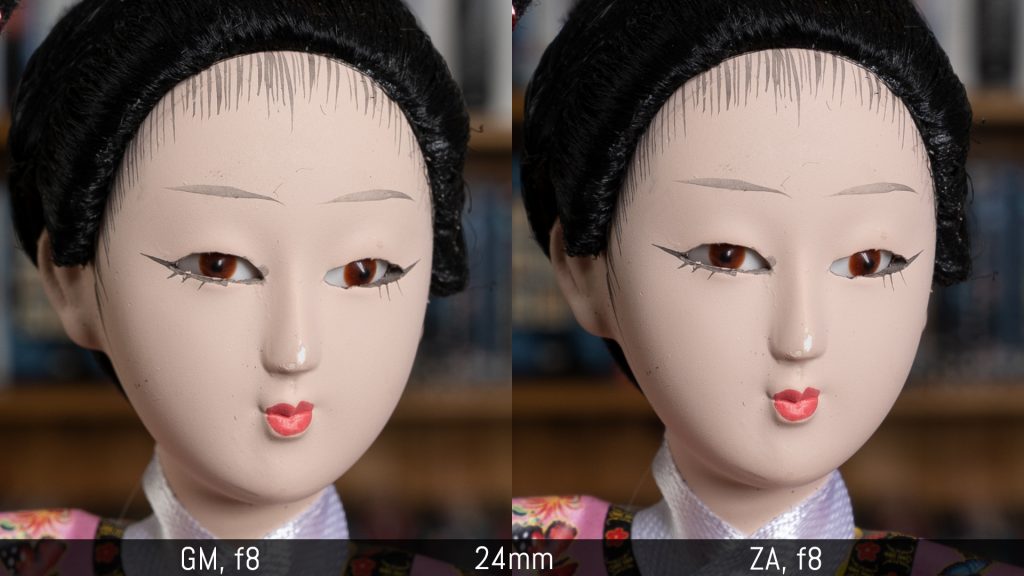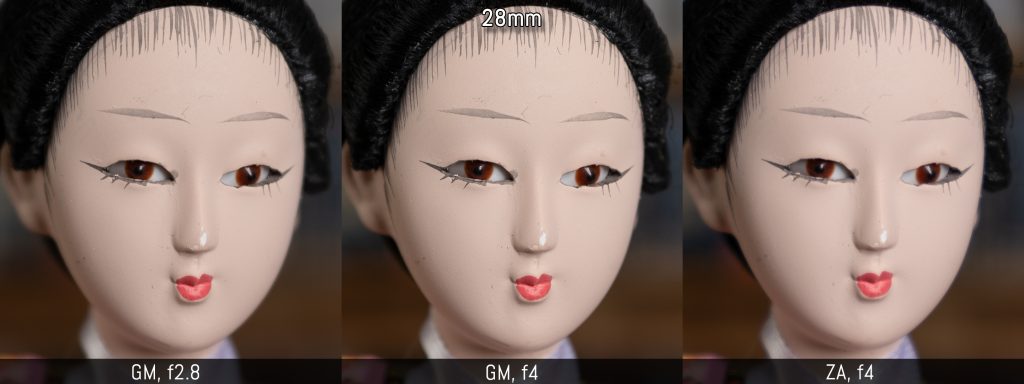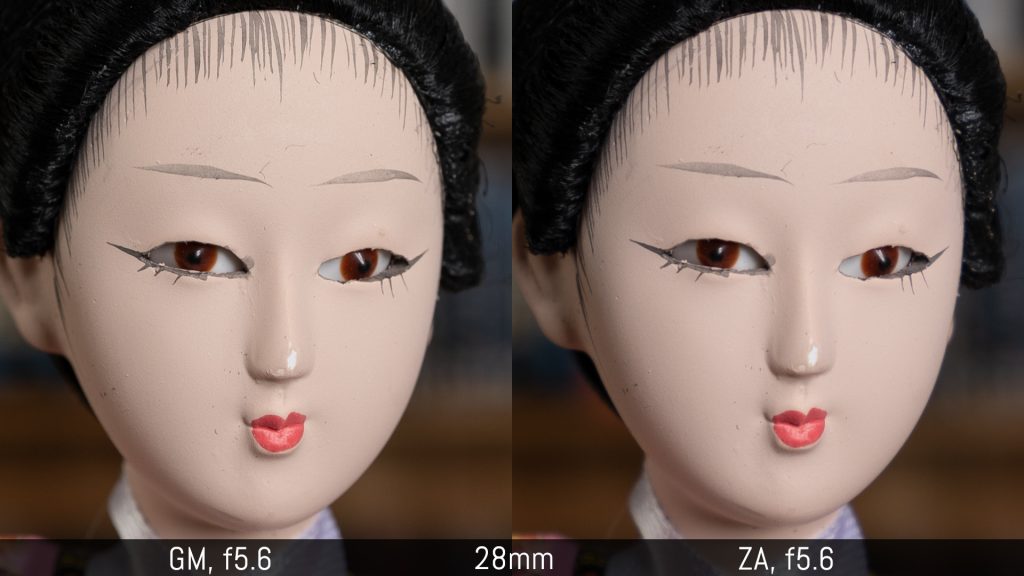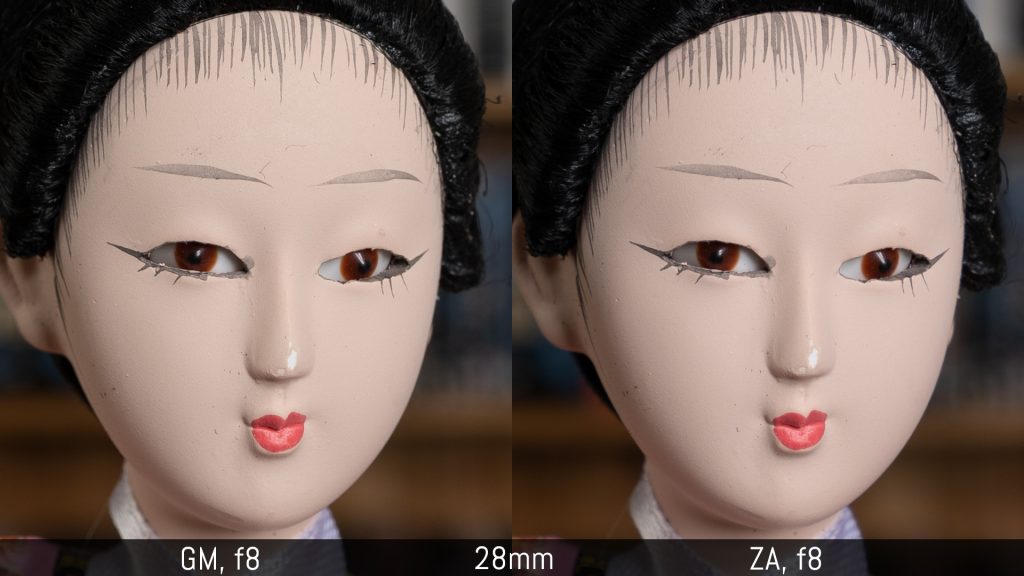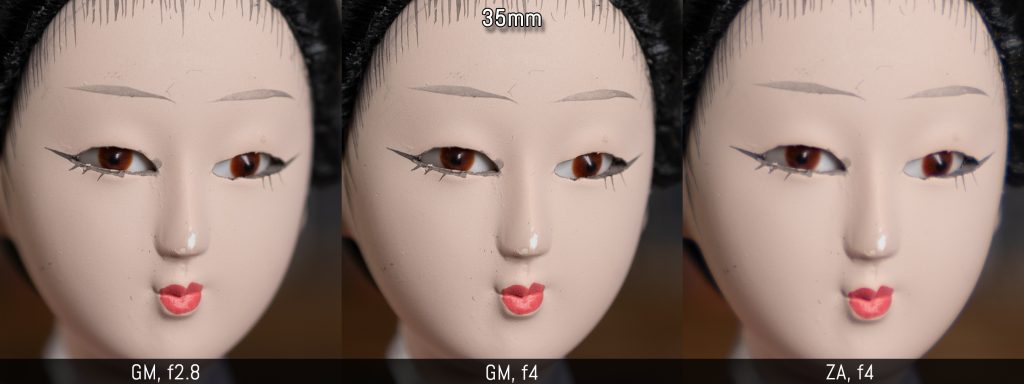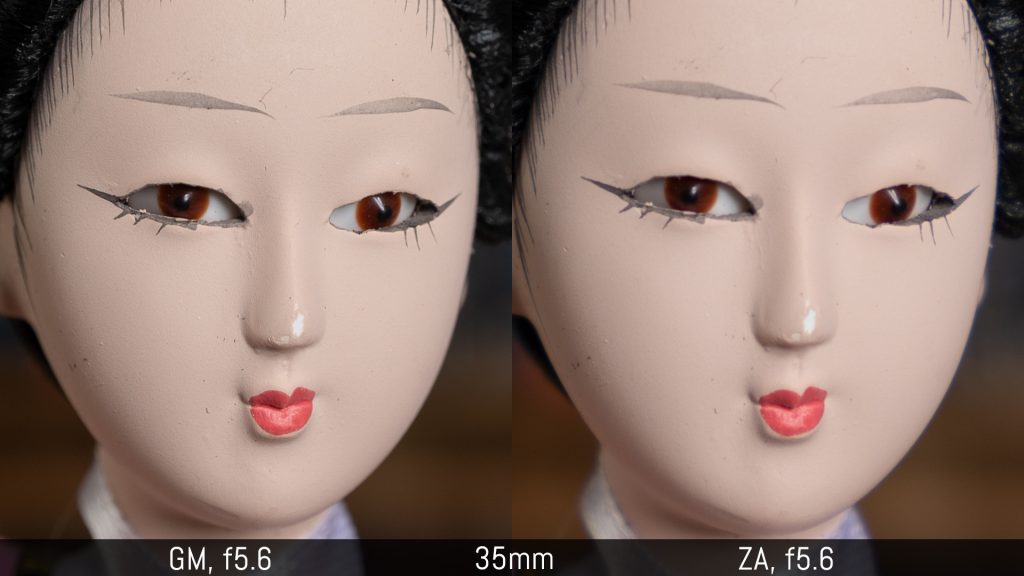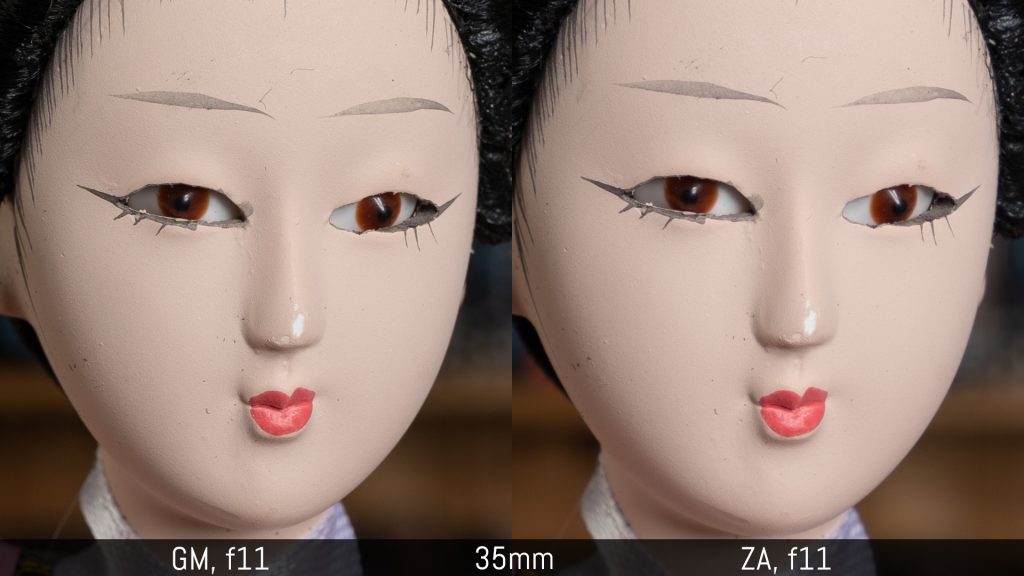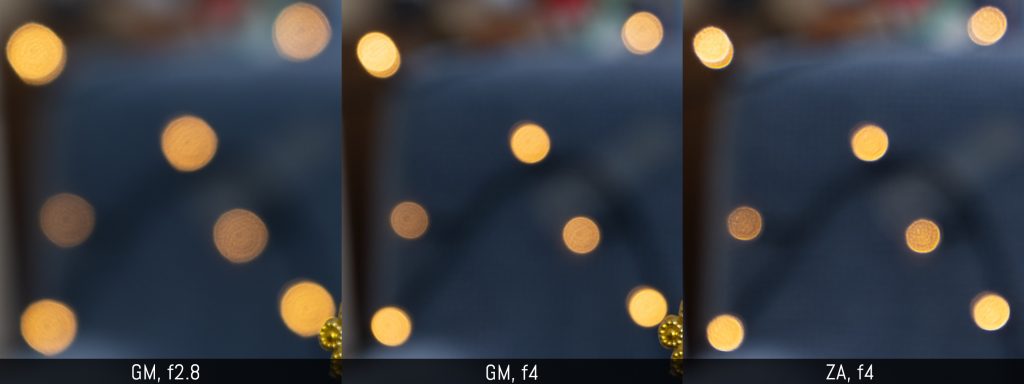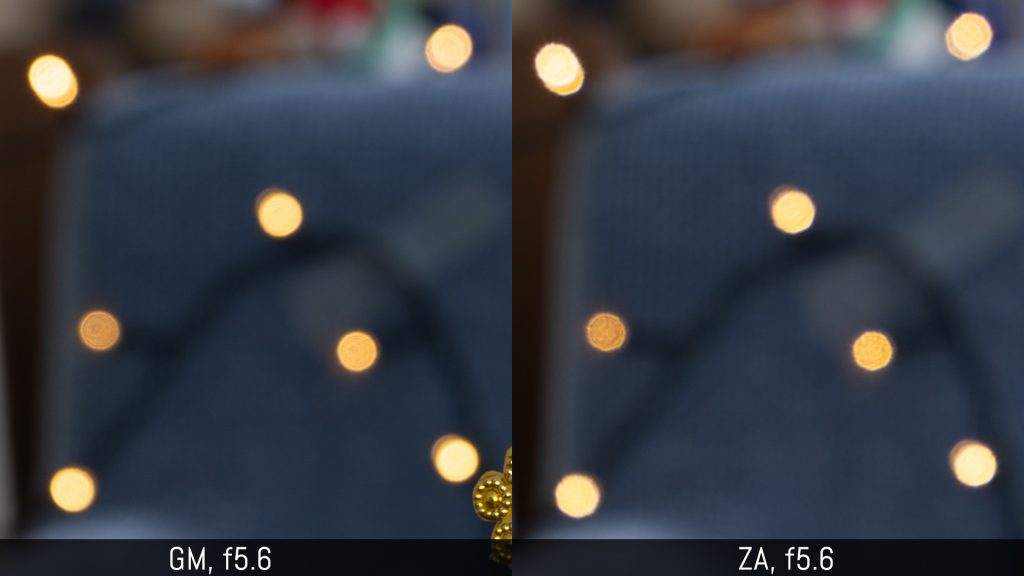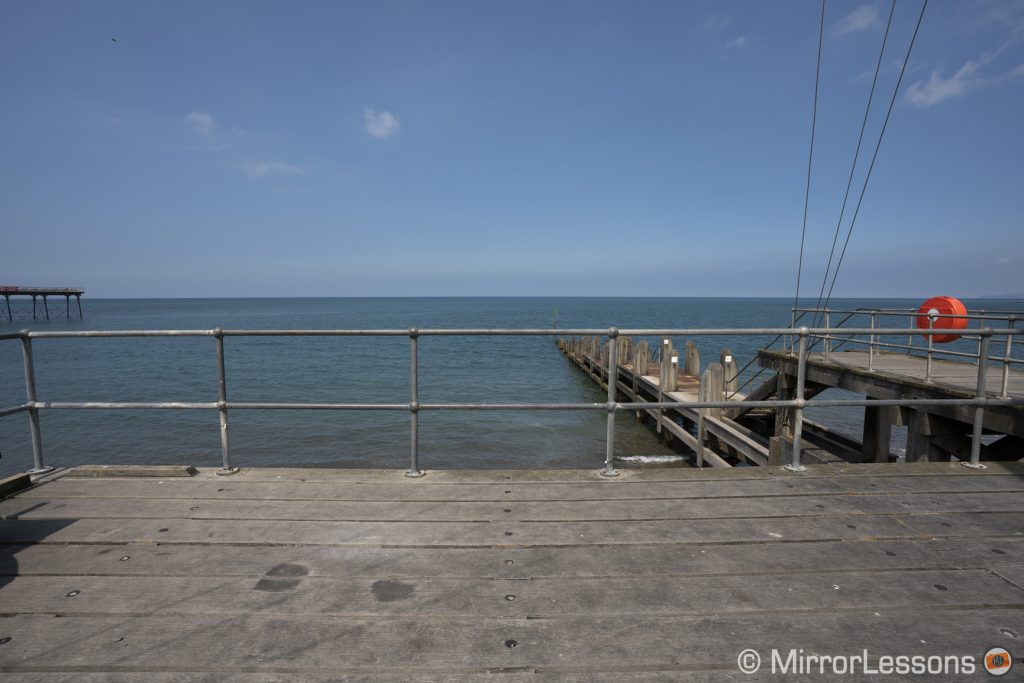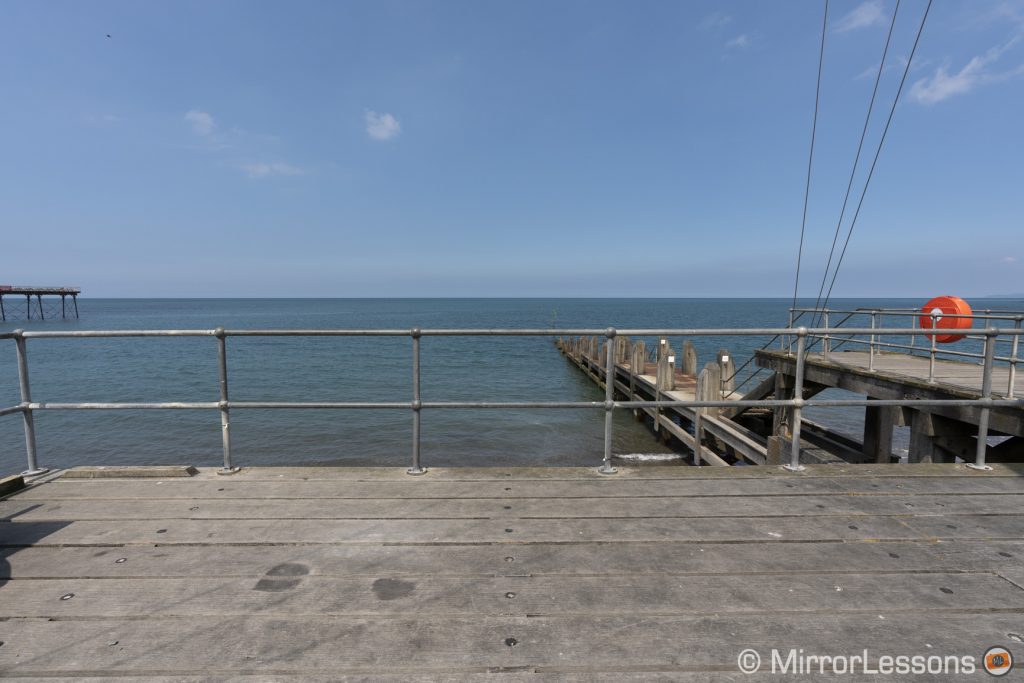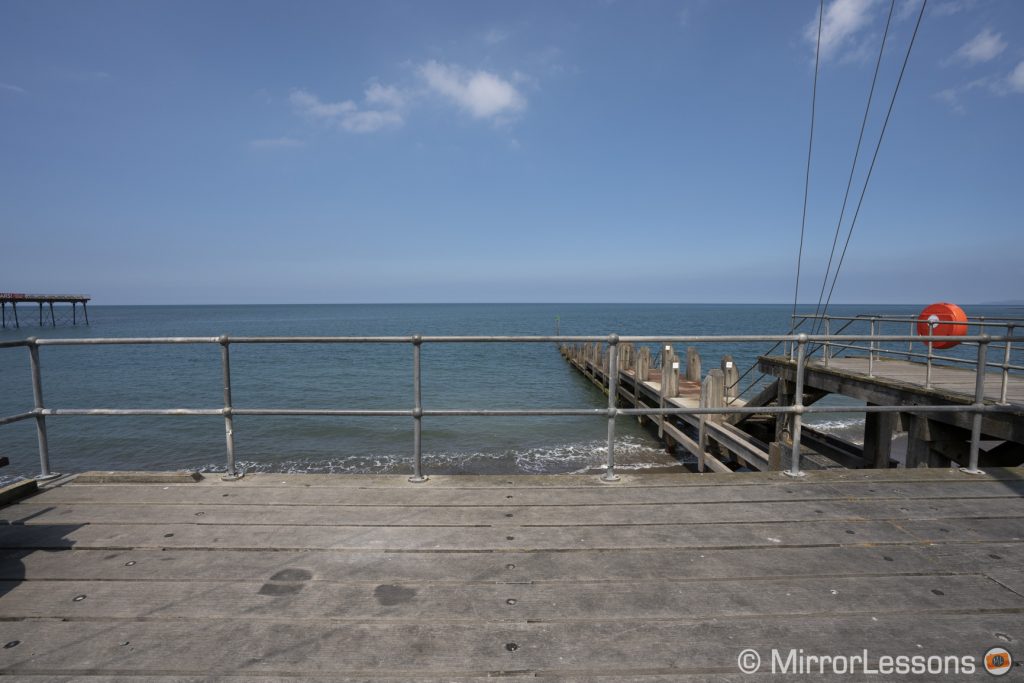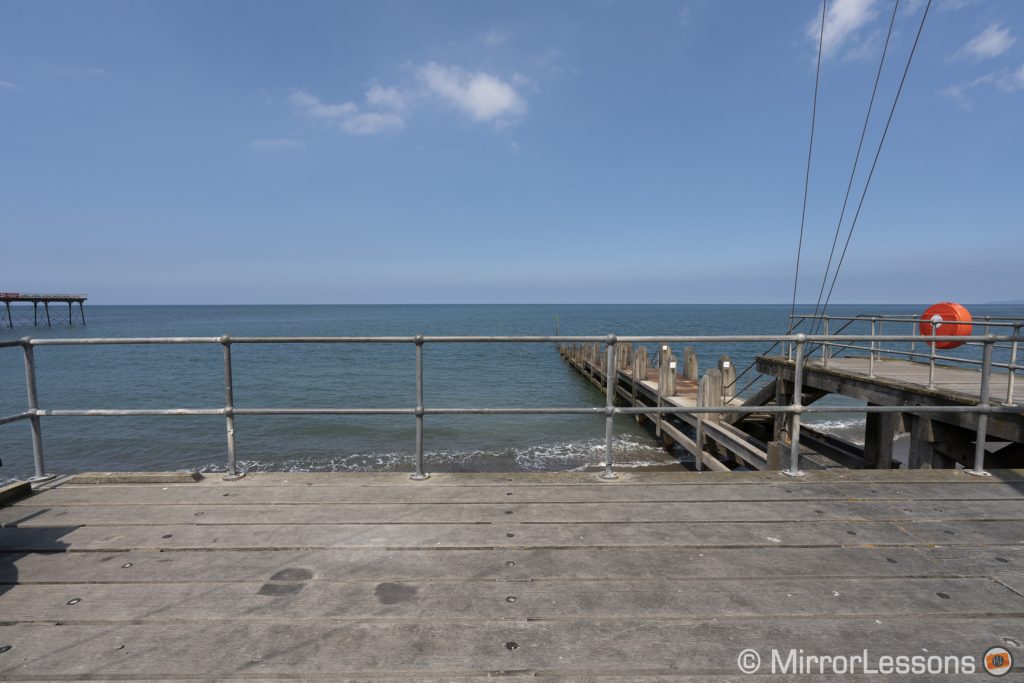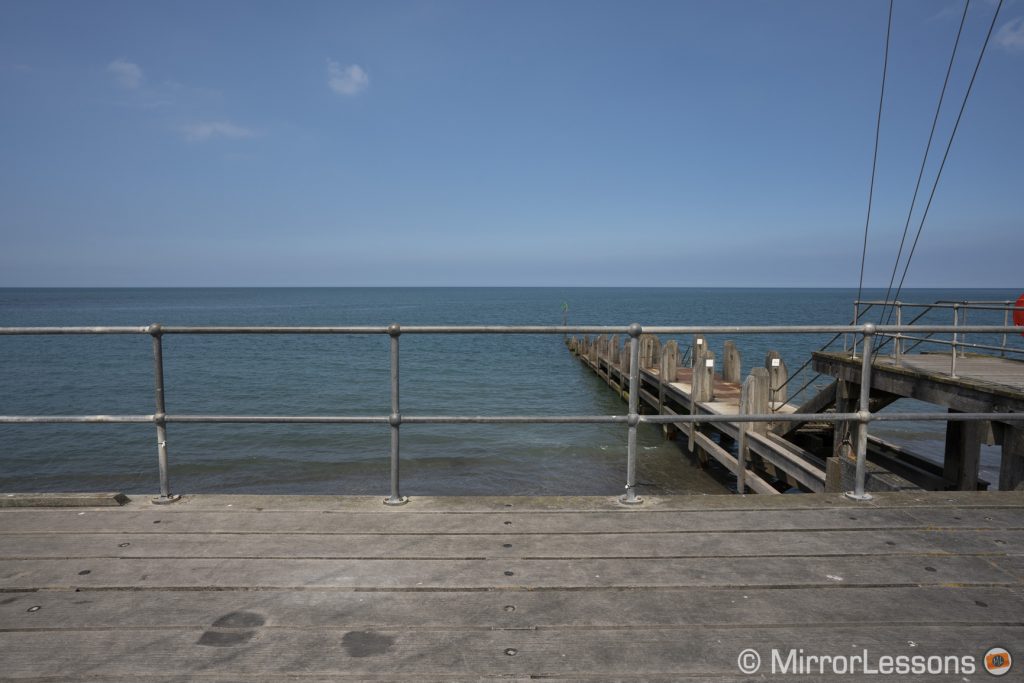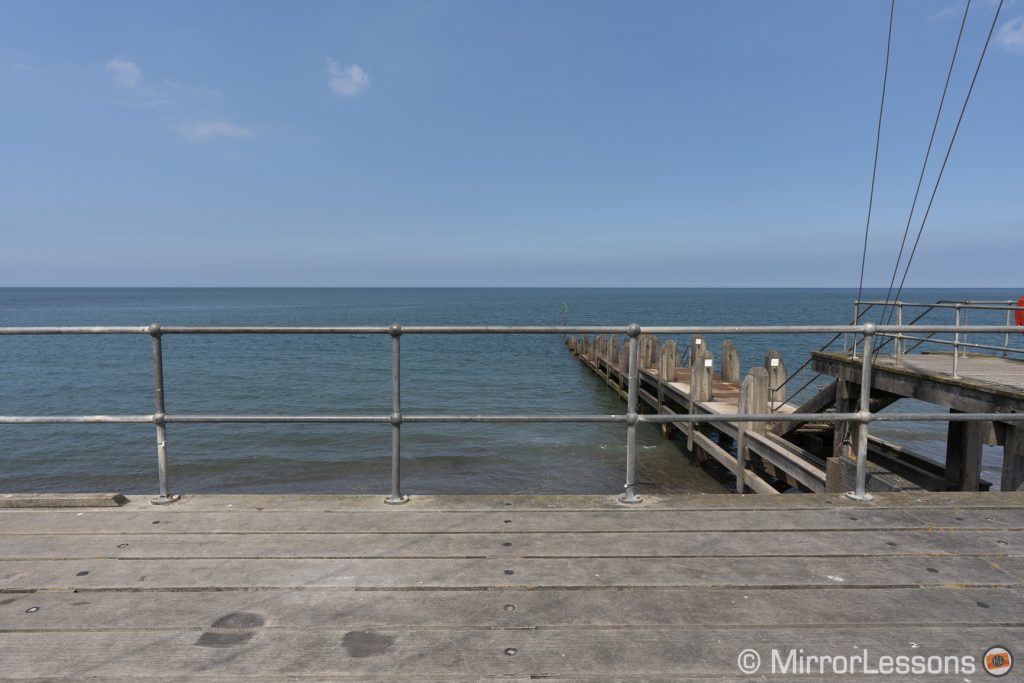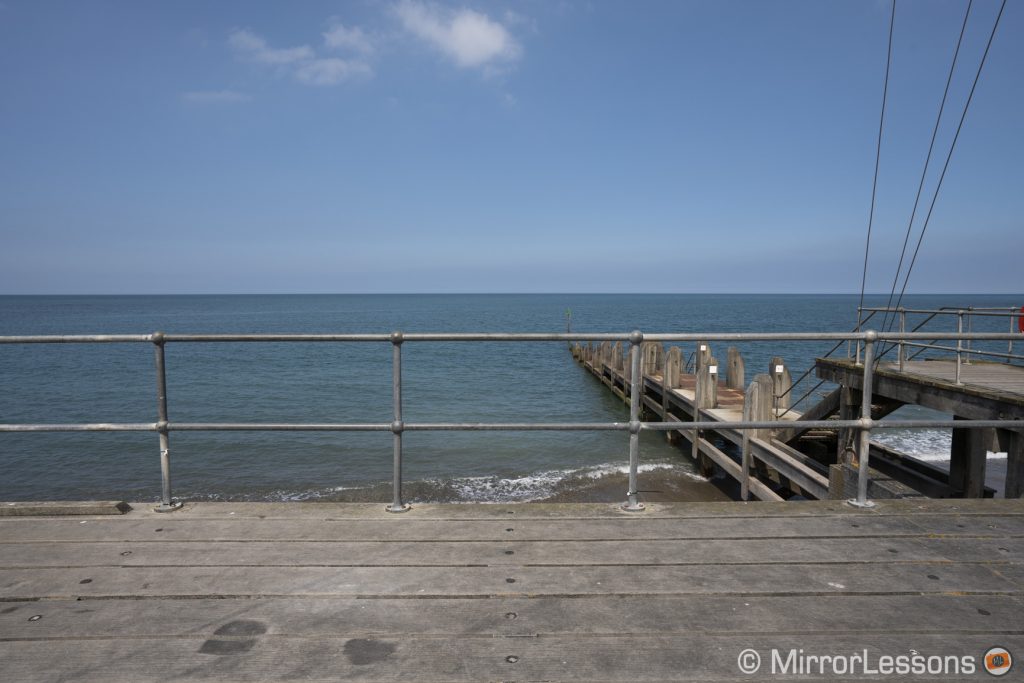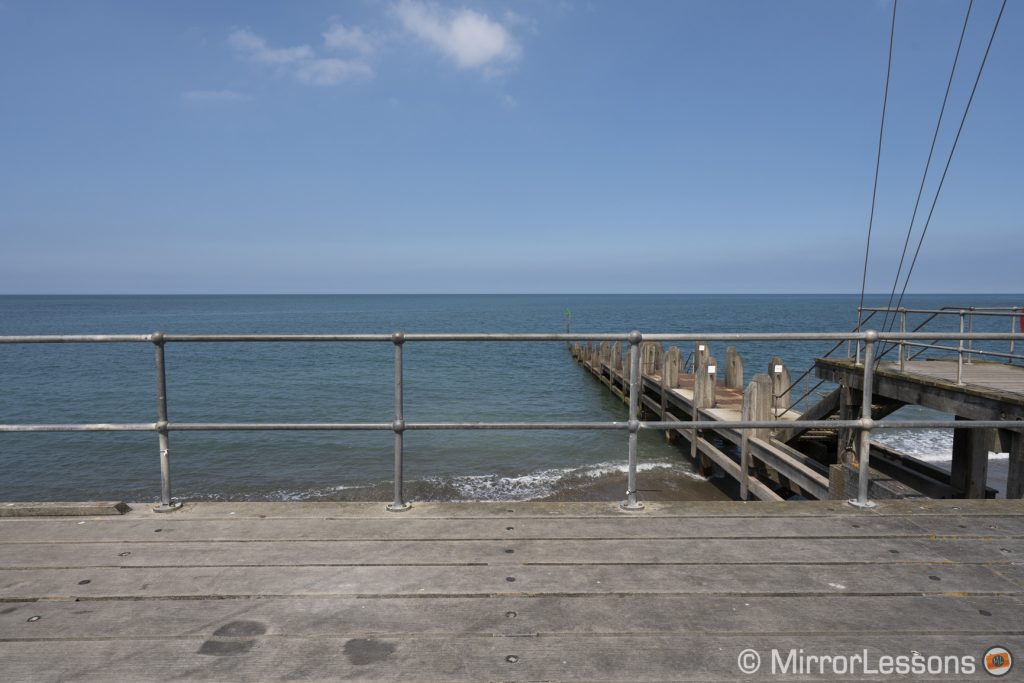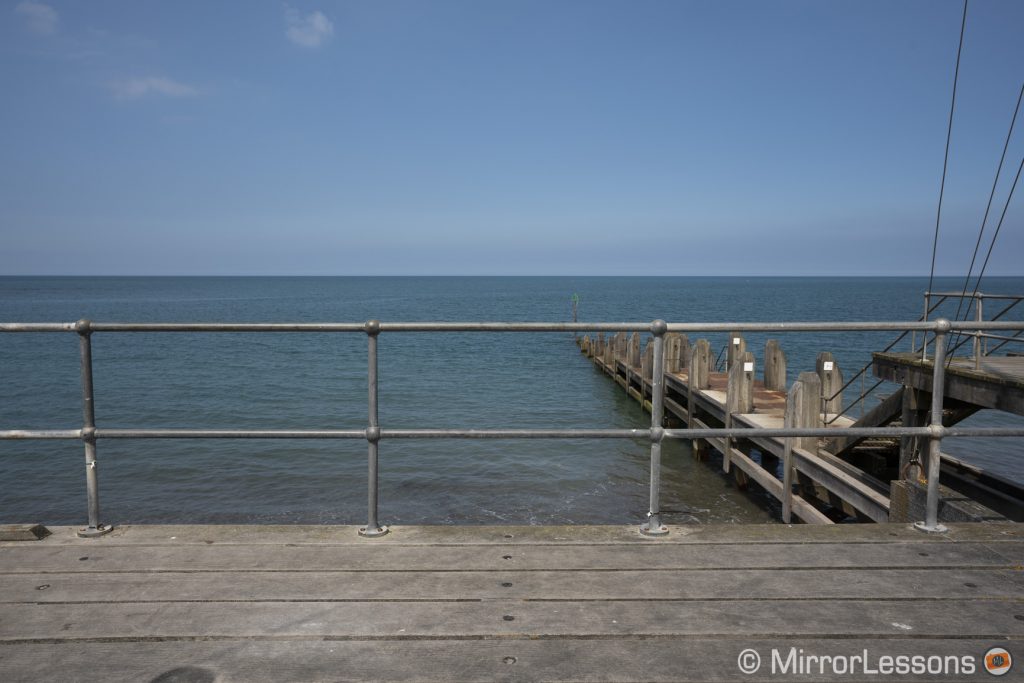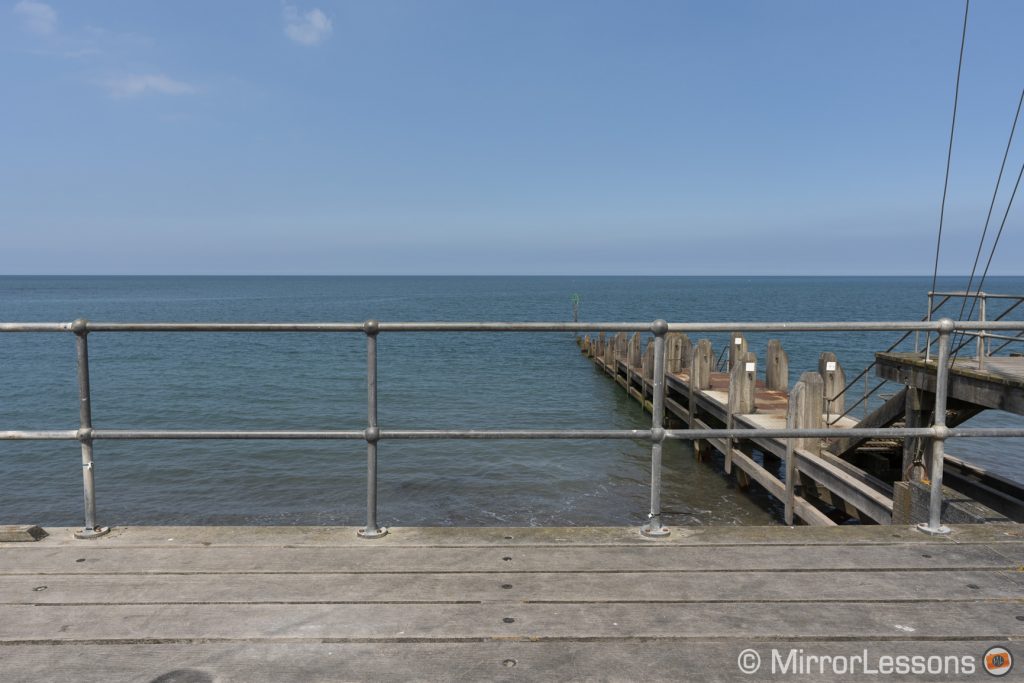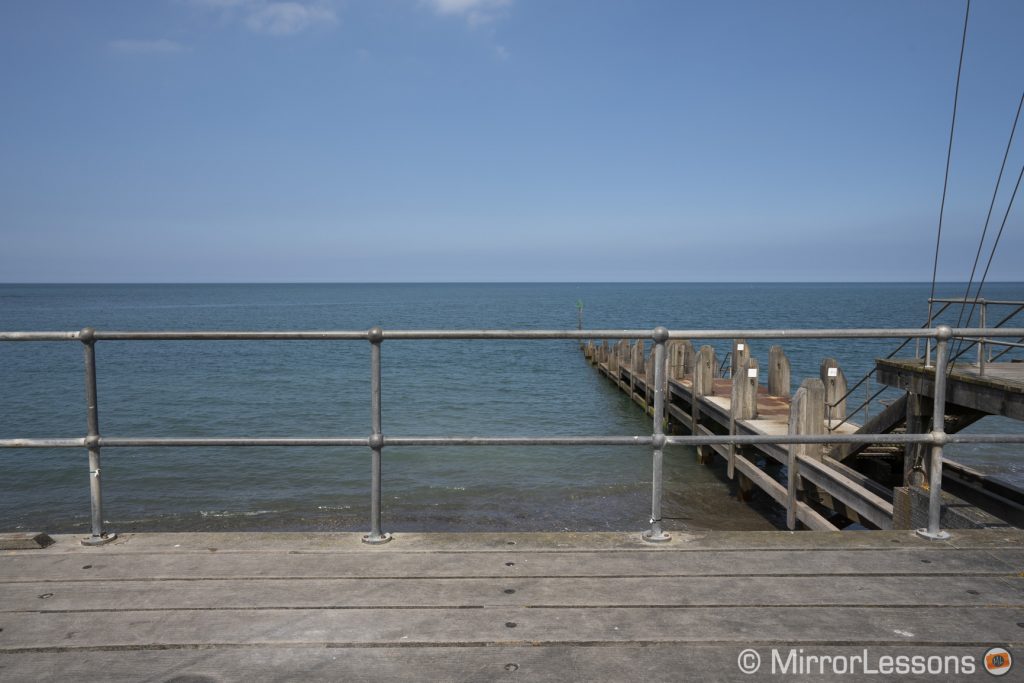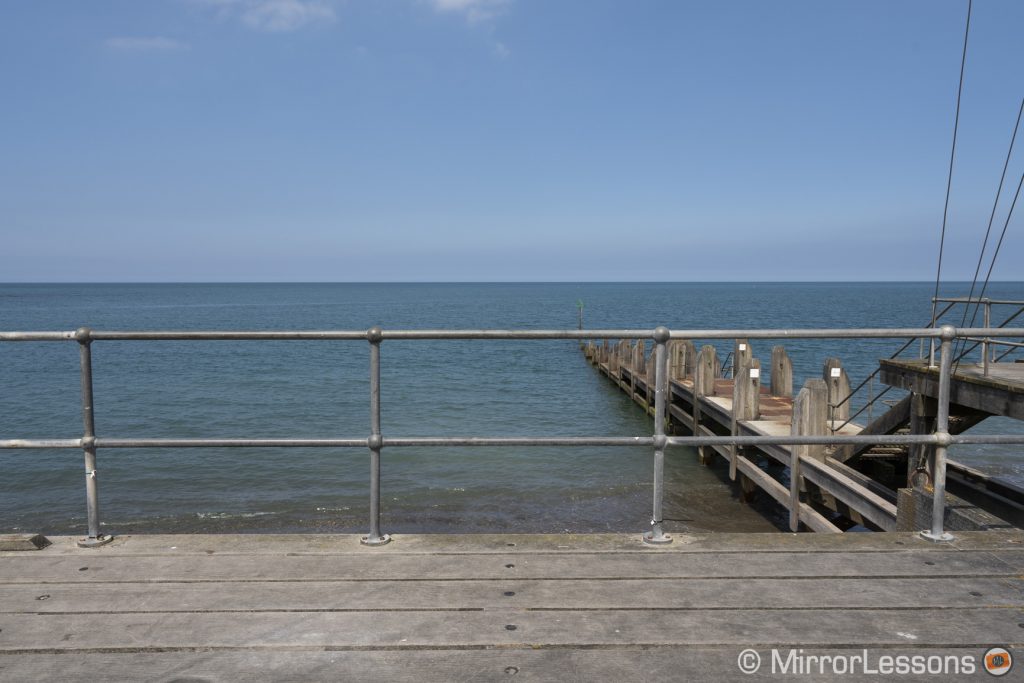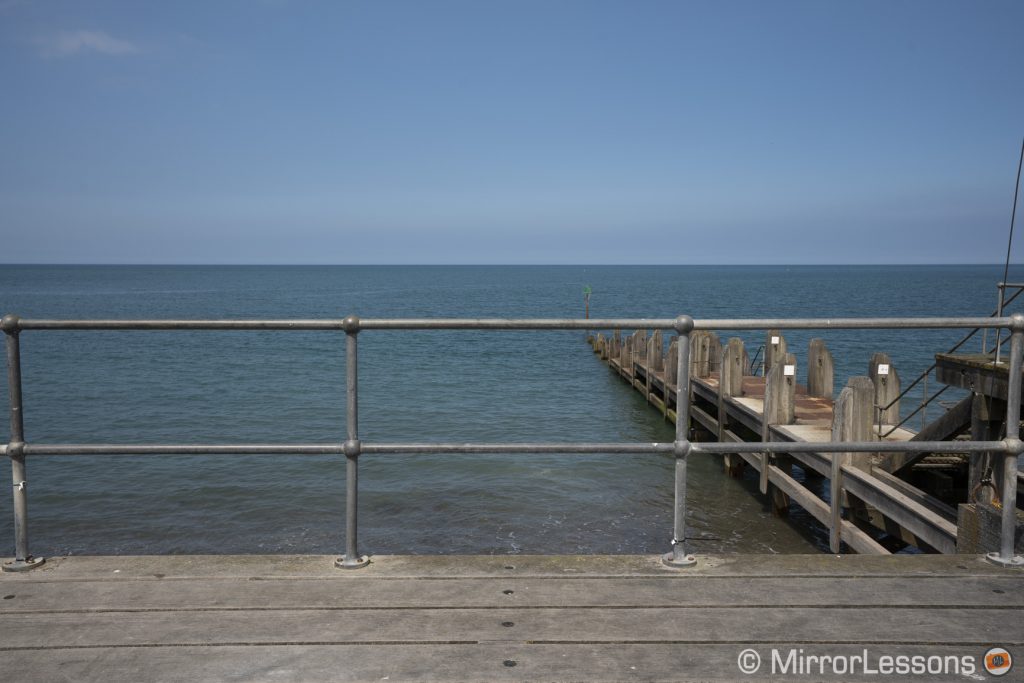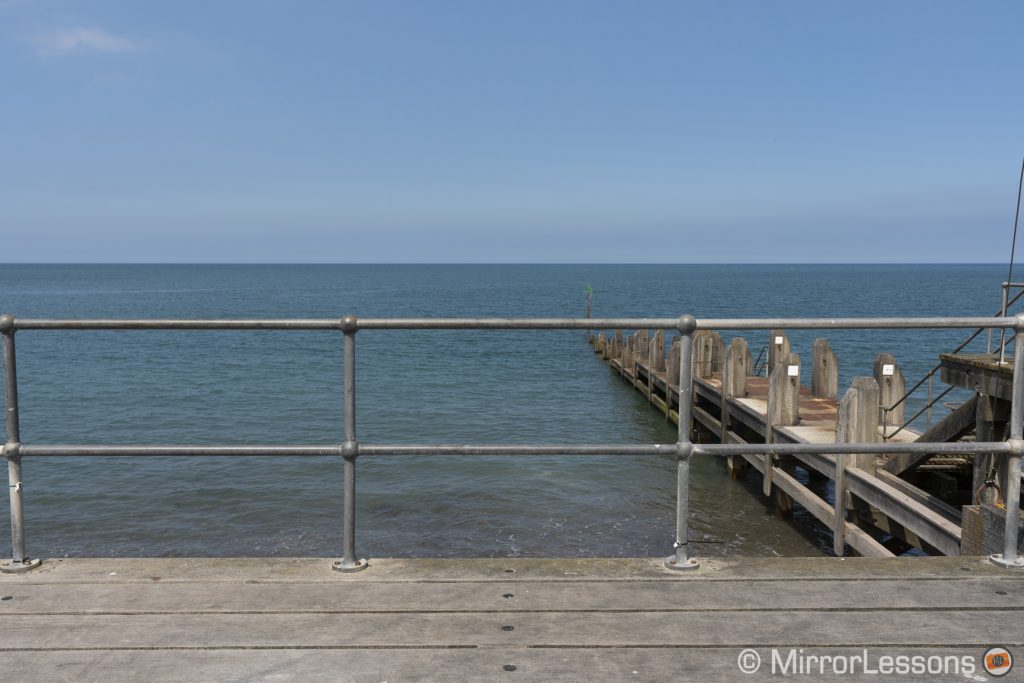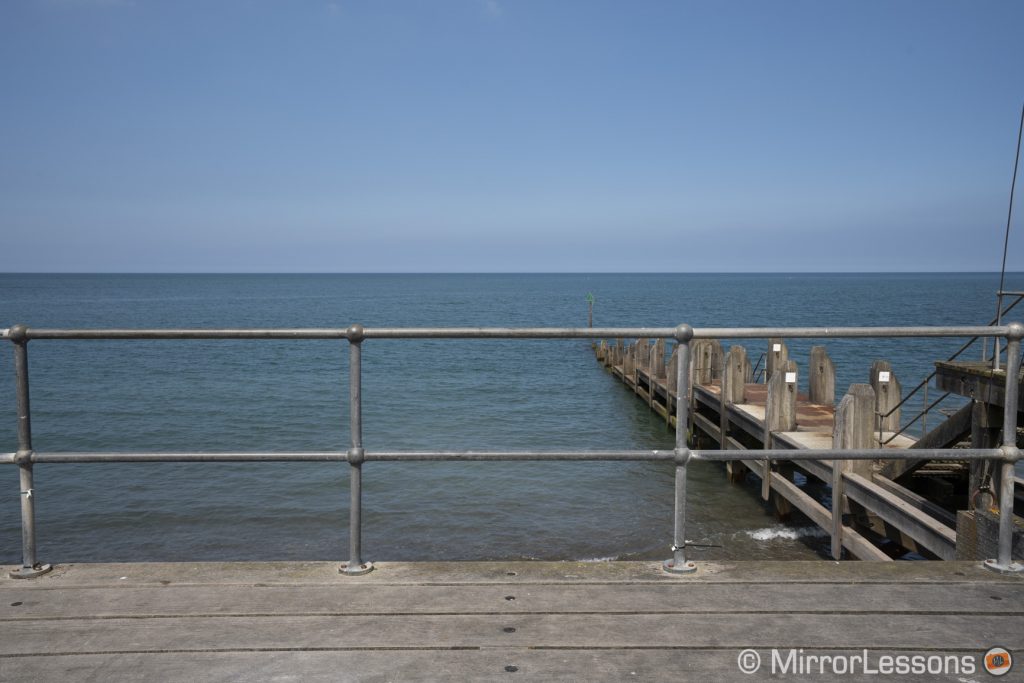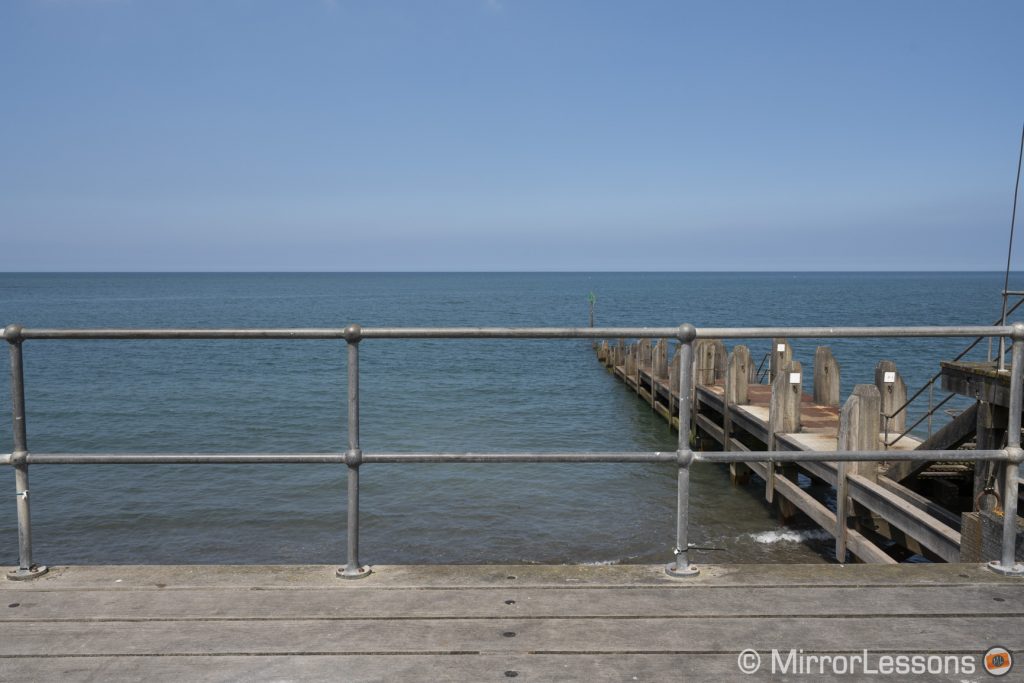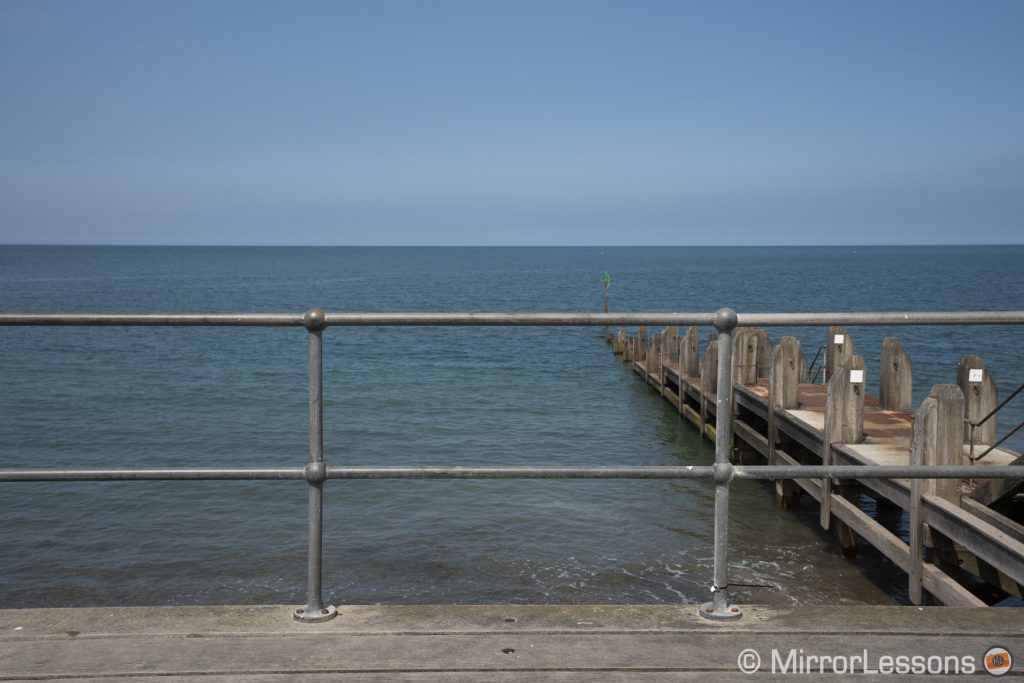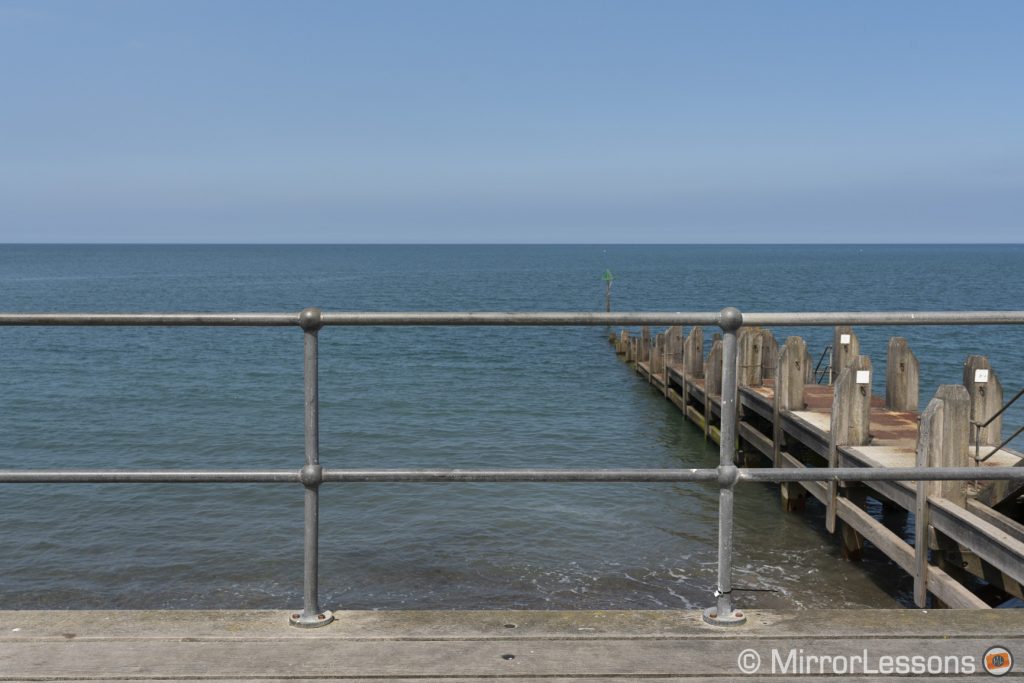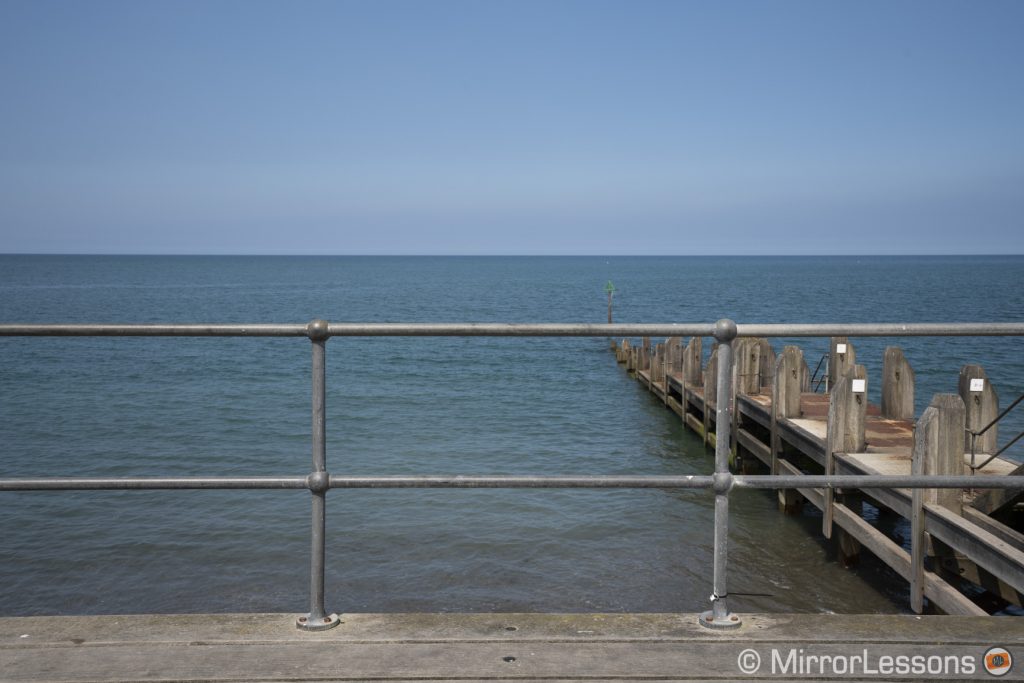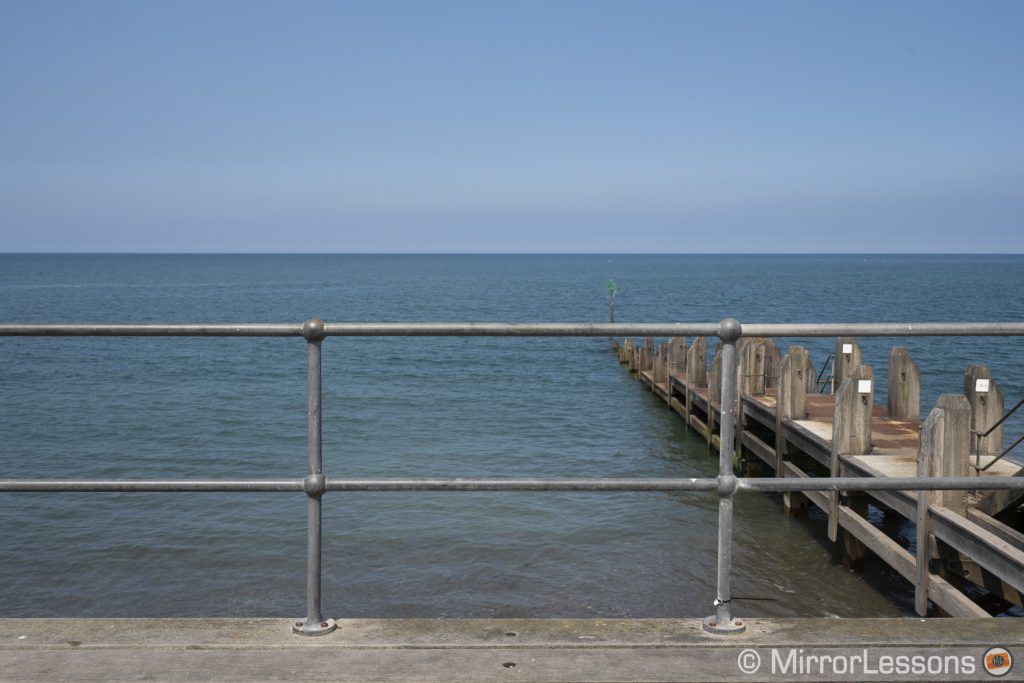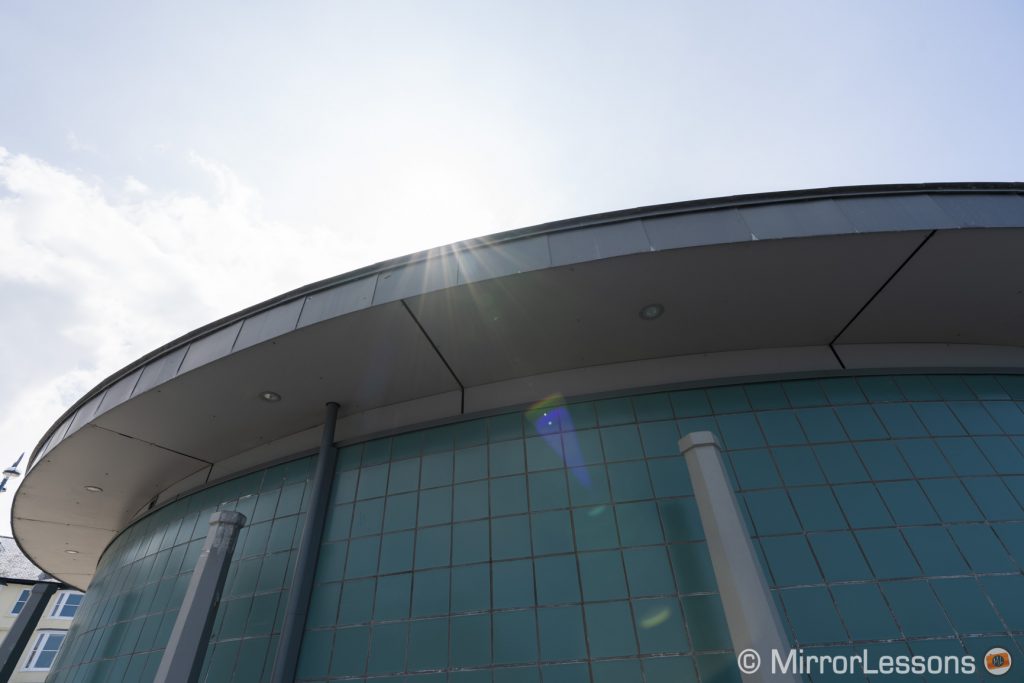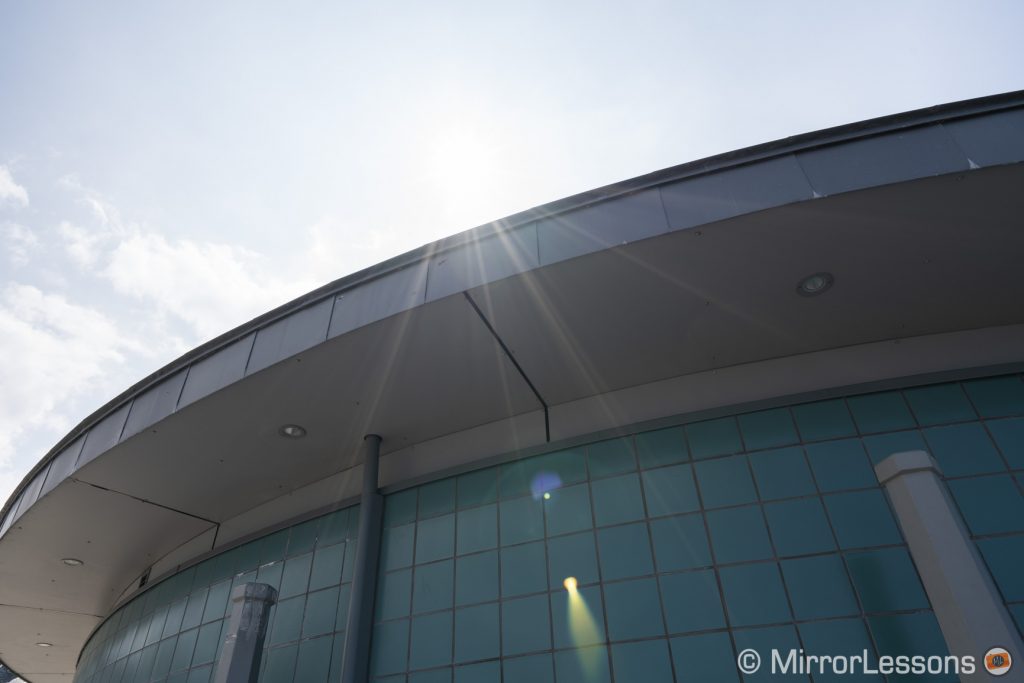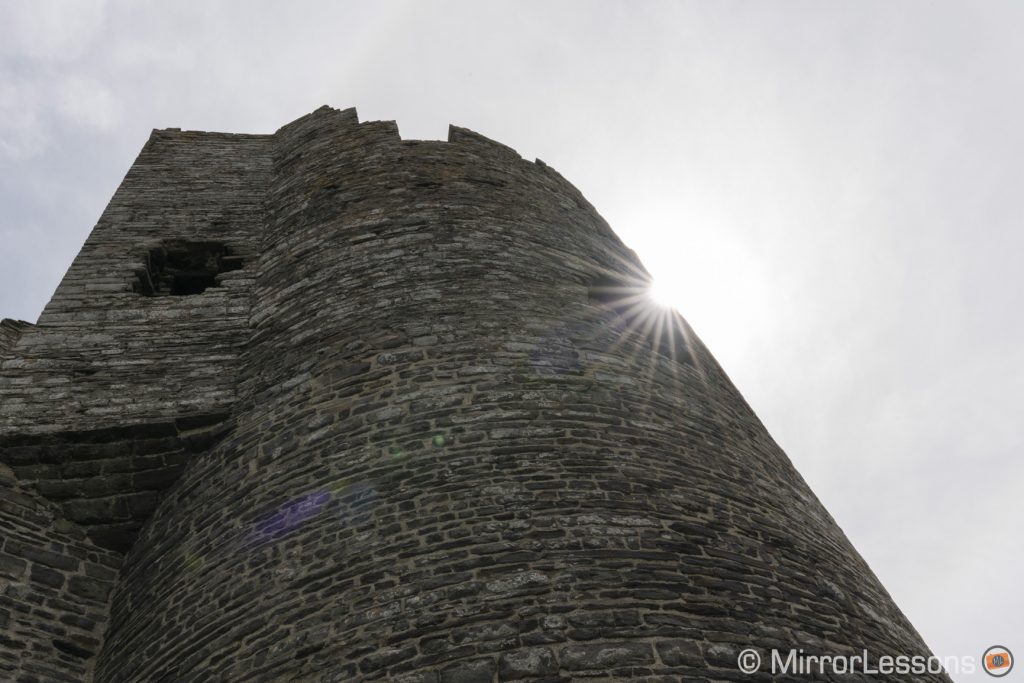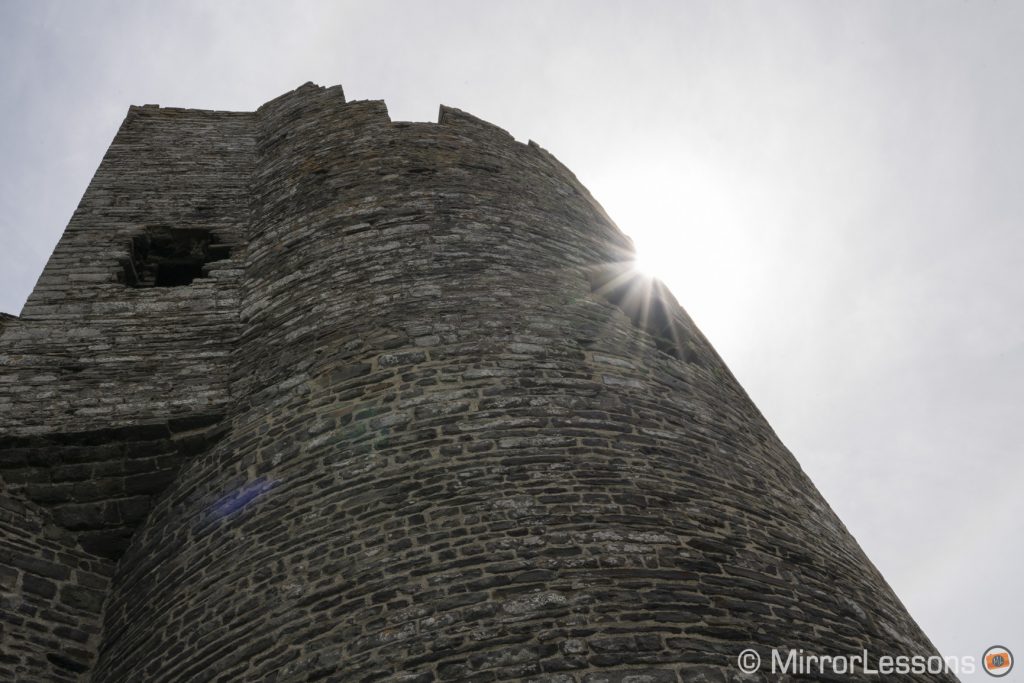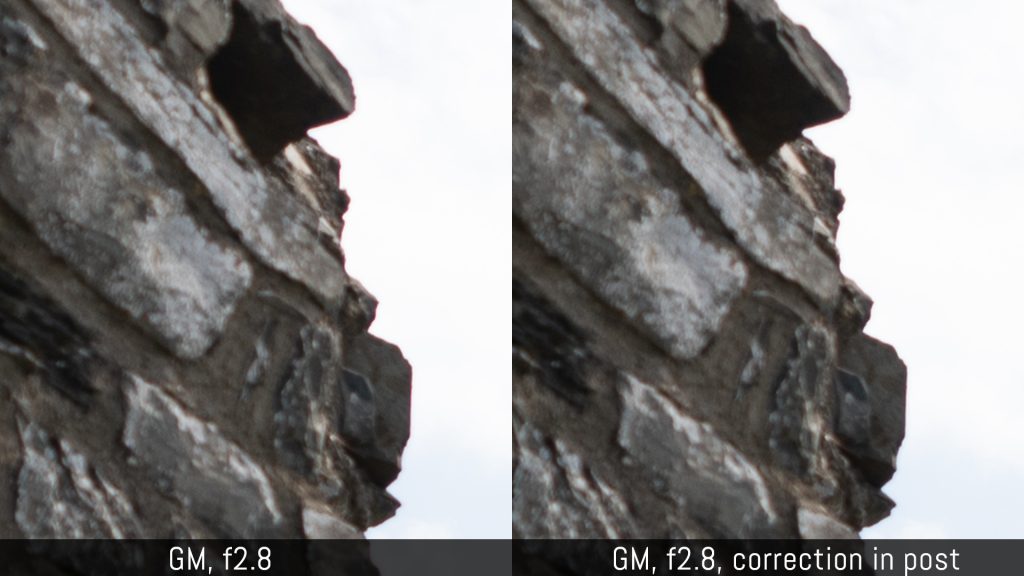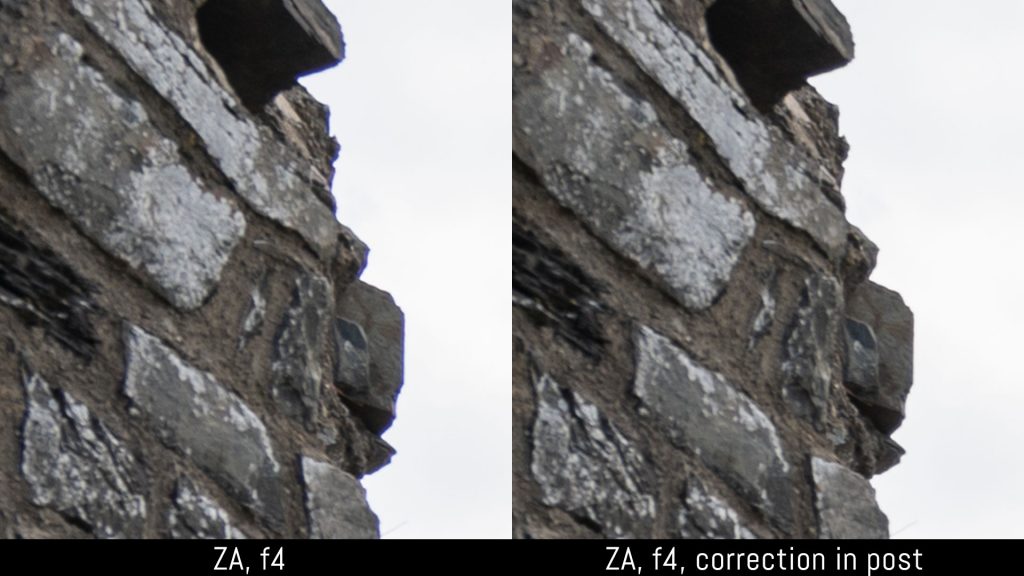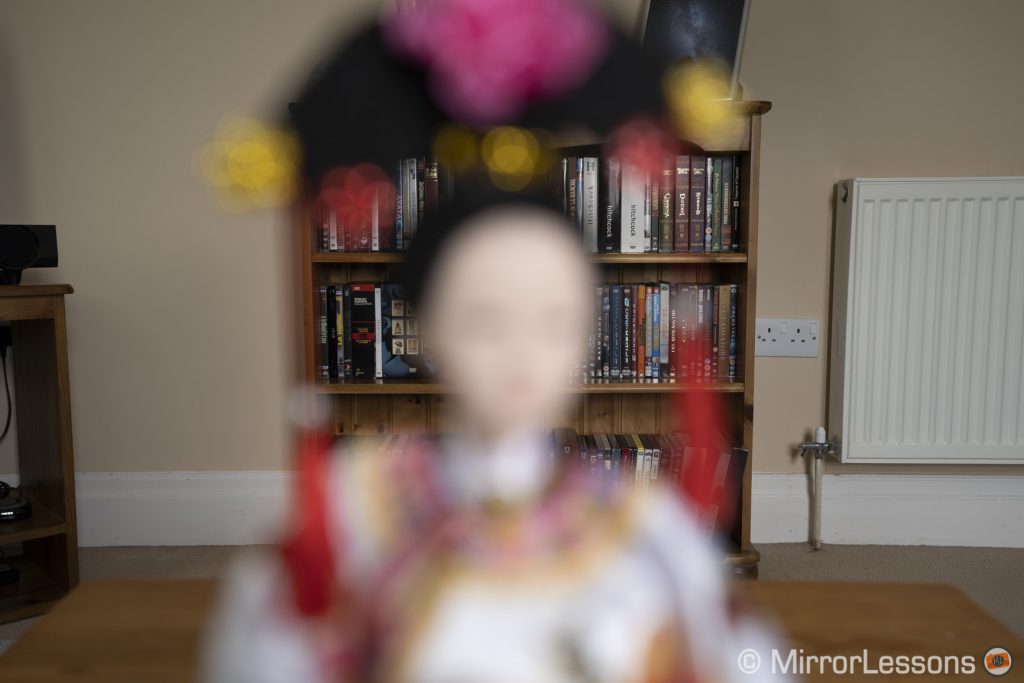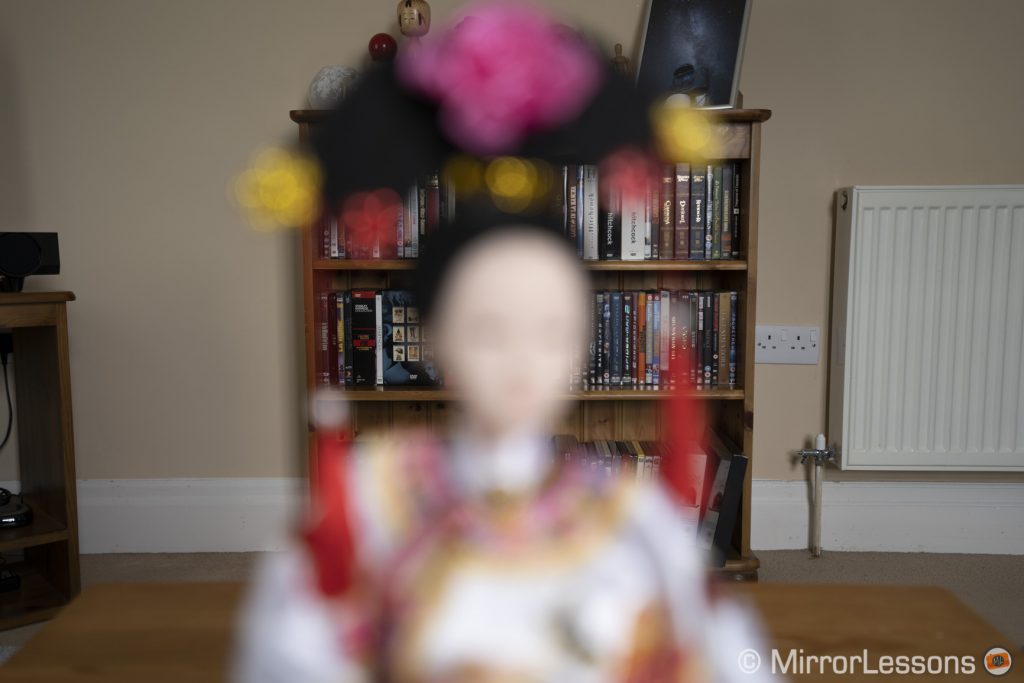The 16-35mm f/4 ZA was the third zoom released for the Sony full-frame E-mount system in 2014 and completed the f/4 constant aperture series. At the time, the trio was the only option available if you wanted quality variable focal length lenses.
Four years later, Sony users have much more choice including a set of faster f/2.8 constant zooms. The latest to be realised was the 16-35mm which is part of the high quality G Master series.
I have good memories of the 16-35mm ZA when I tested it on the A7 mark II in 2015 but I was curious to see what differences the G Master lens would bring to the table besides the obvious faster aperture.
Recently I had the chance to test these two products side-by-side – here are my findings!
Ethics statement: We rented the two lenses to conduct our comparison. We were not asked to write anything about these products, nor were we provided with any sort of compensation. Within the article, there are affiliate links. If you buy something after clicking the link, we will receive a small commission. To know more about our ethics, you can visit our full disclosure page. Thank you!
[toc heading_levels=”2″]
Main Specifications
FE 16-35mm f2.8 GM
- Mount: E-mount
- Format coverage: 35mm
- Focal length: 16-35mm
- Maximum aperture: 2.8
- Minimum aperture: 22
- Number of aperture blades:11
- Angle of view: 107-63°
- Closest focusing distance: 28cm
- Maximum image magnification: 0.19x
- Lens configuration: 16 elements / 13 groups
- Special elements: 2 XA (extreme aspherical), 3 aspherical and 12 ED (extra dispersion) elements
- Lens surface coating: Yes (Nano AR)
- Optical Image Stabiliser: No
- Dimensions: ø88.5 x 121.6mm
- Filter diamater: 82mm
- Weight: 680g (excluding caps and hood)
FE 16-35mm f4 ZA OSS
- Mount: E-mount
- Format coverage: 35mm
- Focal length: 16-35mm
- Maximum aperture: 4
- Minimum aperture: 22
- Number of aperture blades: 7
- Angle of view: 107-63°
- Closest focusing distance: 28cm
- Maximum image magnification: 0.19x
- Lens configuration: 12 elements / 10 groups
- Special elements: 1 AA (advanced aspherical), 4 aspherical and 3 ED (extra dispersion) elements
- Lens surface coating: Yes (T)
- Optical Image Stabiliser: Yes
- Dimensions: ø78 x 98.5mm
- Filter diamater: 72mm
- Weight: 518g (excluding caps and hood)
Design and ease of use
The Sony G Master is visibly larger than the Zeiss lens and there is a difference in weight too, with the GM being 162g heavier. Personally I didn’t find the difference in weight to be a deal breaker but the compactness of the ZA lens is definitely a bonus when you’re trying to fit everything inside a small bag.
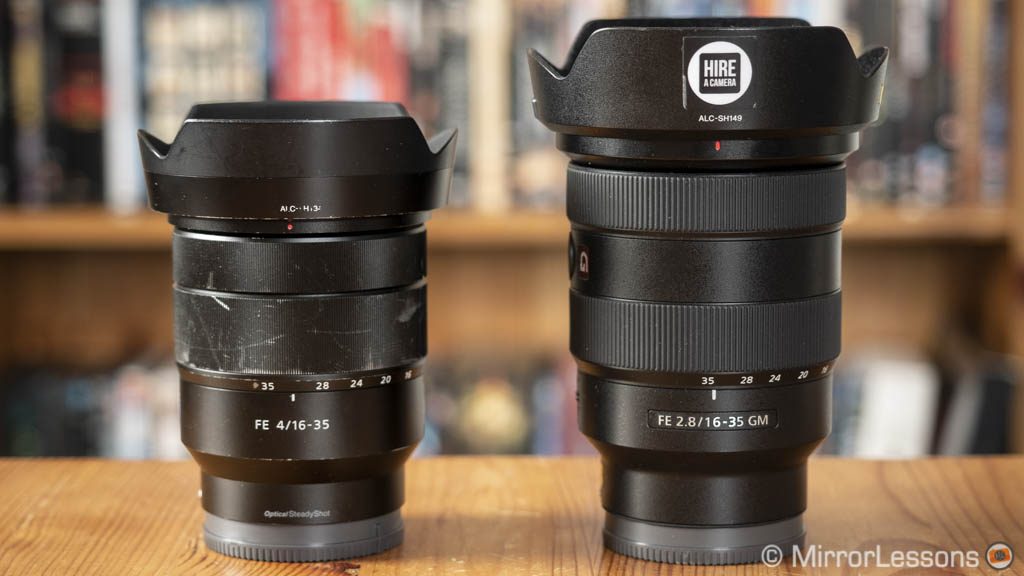
The two lenses feature a dust and moisture resistance design. In terms of build quality, they’re both good but the 16-35mm 2.8 feels more robust overall. The zoom mechanism isn’t internal and they extend by approximately the same amount when zooming.
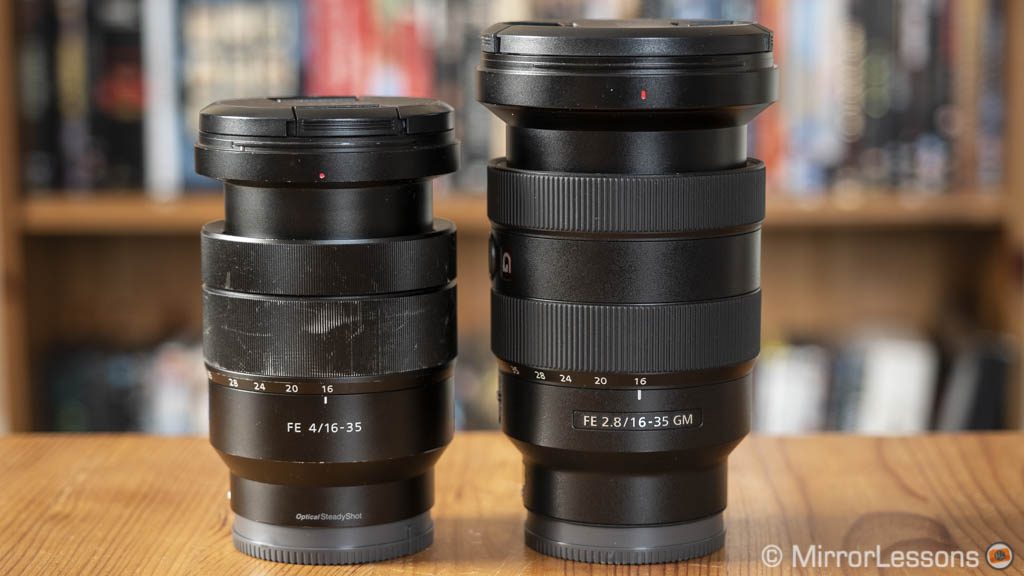
Note that the seared-off paint you see on the Zeiss lens is certainly the result of the lens being rented out to many different customers whereas the G lens felt much newer.
The superior build quality of the 2.8 lens is even more evident when you use the rings. Both zoom and focus rings are smoother and more precise in operation.
Unlike the Zeiss, the GM features an AF/MF switch and a focus hold button on the side of the barrel. The latter can be configured to a different function in the menu.
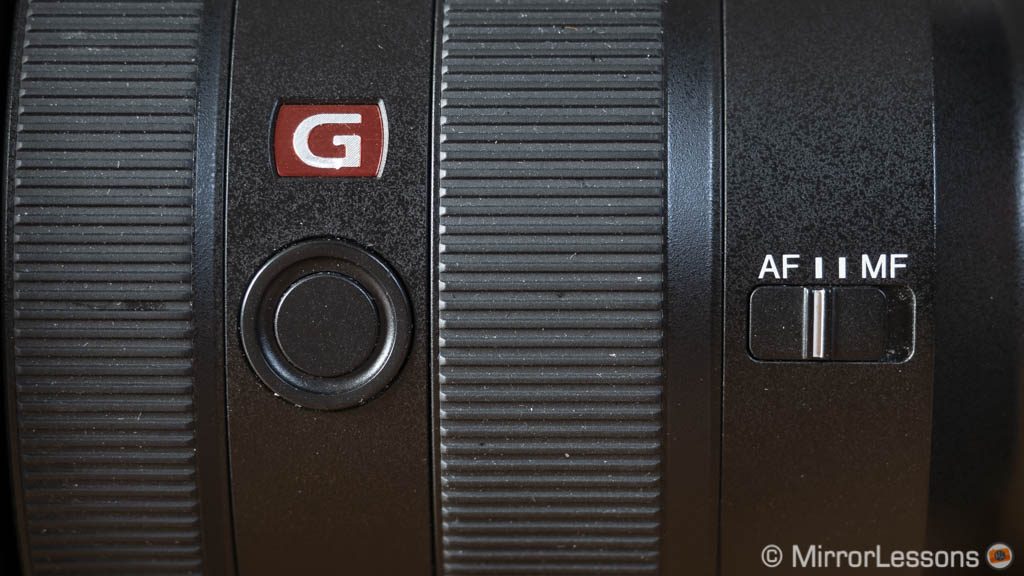
The G Master has a larger filter diameter (82mm vs 72mm). Both come with a petal shaped hood. The one on the Zeiss is made of metal and plastic whereas the Sony’s is purely plastic.
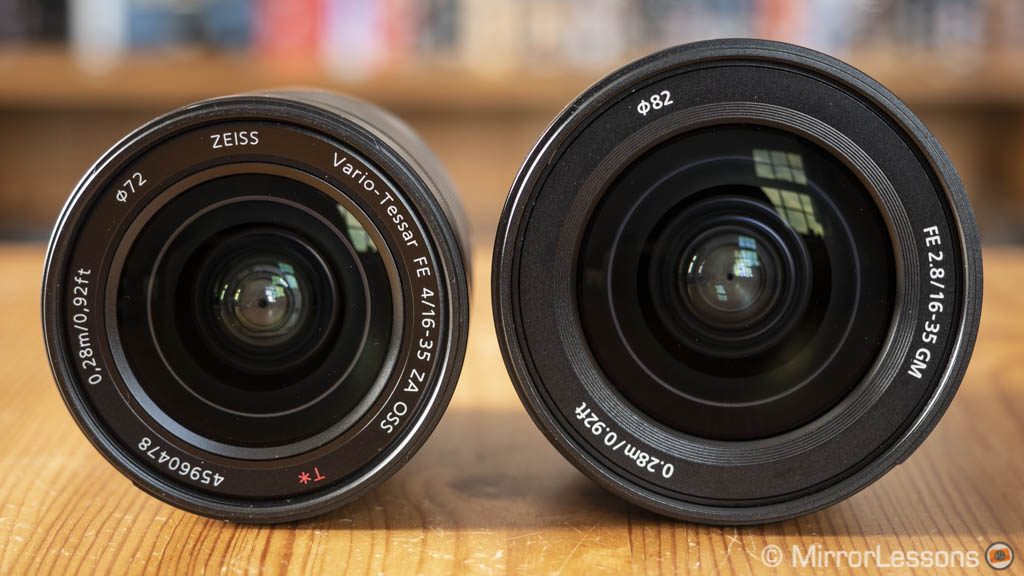
Optical quality: Sharpness
The 16-35mm f2.8 features 16 elements in 13 groups including 2 XA (extreme aspherical), 3 aspherical and 2 ED elements. It has a circular 11 blade aperture and Nano AR coating to reduce flare and ghosting.
The 16-35mm f4 features a Zeiss Vario-Tessar design with 12 elements in 10 groups, including one AA (Advanced Aspherical), four aspherical and 3 ED glass elements. It uses 7 aperture blades and features Zeiss’ T coating to control flare.
All the images for the side-by-side test were taken with the A7R mark III.
Centre sharpness
Let’s begin with sharpness at the centre. Starting with their fastest apertures (2.8 and 4) at 16mm, the GM matches the sharpness of the Zeiss, if not even outperforming it slightly. By f/5.6 the results are more similar and remain so until f/11 where diffraction starts to kick in and the GM lens regains a tiny advantage. At f/16 and f22 especially diffraction becomes more severe.

At 20mm, the performance remains similar with the GM being sharper at 2.8 and 4 in comparison to the Zeiss at its fastest aperture. The results even out from f/5.6 although the GM retains a very small advantage when it comes to crisp detail rendering. Diffraction decreases the performance from f/11 once again on both lenses.
At 24mm, the results are equal at their respective fastest apertures but the GM gains a slight advantage at f/4. Once again from f/5.6 the two lenses deliver nearly identical results while the G Master delivers something extra at f/11. The results remain the same at 28mm.
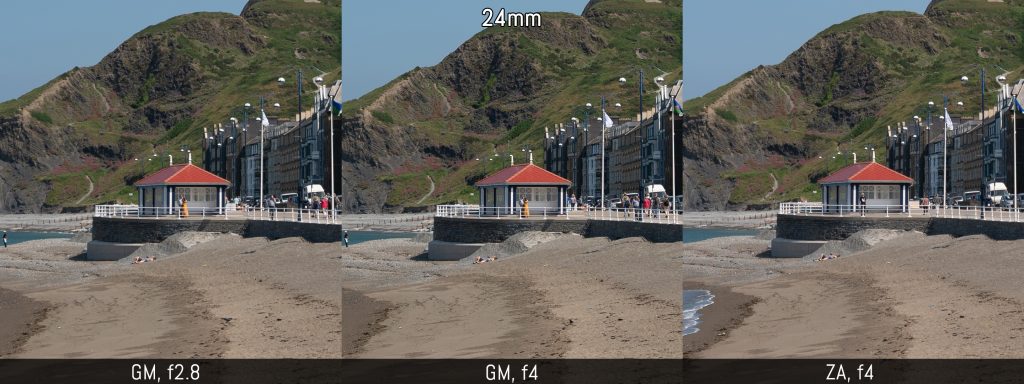
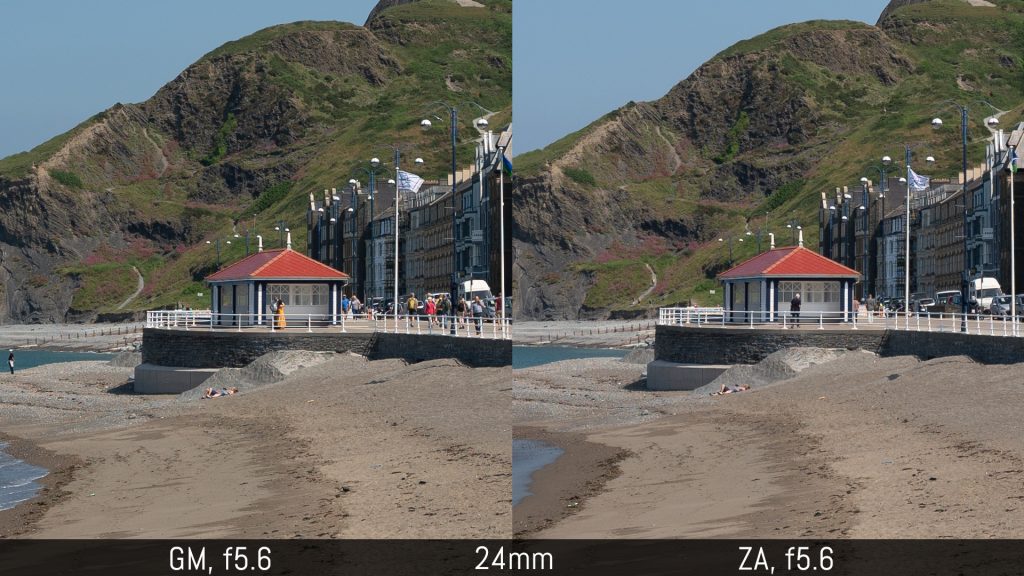
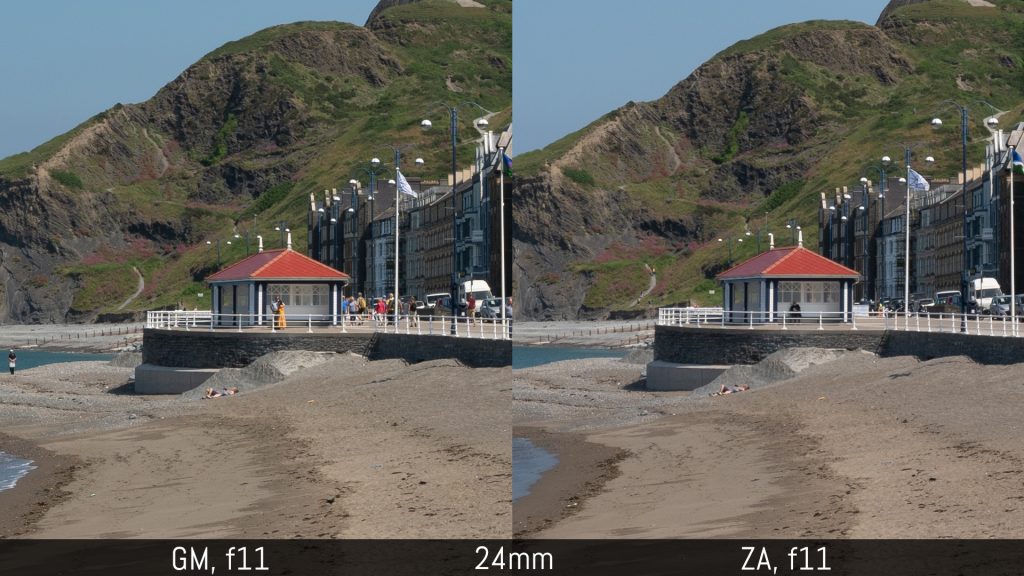
At 35mm, the GM is visibly softer at 2.8 but becomes sharper at f4. From f/5.6 the performance is the same once again.
Corner sharpness
The G Master lens is clearly superior to the Zeiss lens at f2.8 and f4 which is where it reaches its peak performance. The latter doesn’t improve a lot at the smaller apertures, allowing the GM to reign supreme all the way though to f22.

At 20mm the GM delivers better results but the difference at their respective fastest apertures is less pronounced than at 16mm. Still the Sony lens is visibly sharper at f4 and f5.6.
At 24mm the Zeiss improves marginally but the G Master lens remains sharper overall.
At 28mm we finally see the ZA lens get closer to the performance of the G Master. At the fastest aperture the latter is still sharper but the difference from f5.6 is less pronounced.
At 35mm the performance of the Zeiss decreases at the fastest aperture and only manages to reach a similar level to the GM lens at f11.
Minimum focus distance
Both lenses can focus at a minimum distance of 28cm which gives you a magnification ratio of 0.19x.
The performance is very similar at 16mm through all the apertures. In this first example I’m just showing the fastest apertures for each lens where the only difference you’ll notice is the shallower depth of field at 2.8 from the G Master.

The results remain the same at 20mm, where you easily match the same performance with both lenses at all apertures.
At 24mm, the Sony lens is sharper at f4 whereas the performance is similar at their respective fastest apertures. The results are the same at f5.6 whereas at f8 the Zeiss performs slightly better.
At 28mm the G Master is visibly sharper at f4, and f2.8 is sharper than f4 on the Zeiss. Only at f8 do we see similar results.
Finally, the Zeiss performs the worst at 35mm where it can’t match the GM lens until f11.
Optical Quality: Bokeh and other characteristics
Bokeh and depth of field
The bokeh balls produced by the G Master have a smoother texture and less harsh onion rings than the Zeiss lens. They also appear more rounded.

Of course the Sony GM lens has the advantage of being 1 stop faster, so the f2.8 aperture gives you an advantage when it comes to shallow depth of field, especially when used at 35mm.
Distortion
Barrel distortion is present at 16mm on both lenses but is more severe on the GM version. However it disappears almost entirely with digital correction, which is available in many post processing software applications or with the in-camera JPGs (make sure to put the Distortion Comp. setting to Auto).
At 20mm it is much less severe on both lenses, even without applying digital correction. By 24mm it is gone.
At 28mm and 35mm, there is some pincushion distortion before digital correction.
Flare
Both lenses do fairly well at controlling internal reflections. You can encounter some polygonal and rainbow flares but nothing too invasive. They are more severe on the Zeiss lens at mid-zoom range. At f22, star flares looks better from the GM lens.
Chromatic aberration
Chromatic aberration is very well controlled overall. You can spot some mild red CA from the GM lens at f2.8 if you look for it, but it is almost gone by f4. This applies to all focal lengths except 35mm where there isn’t even a trace at the fastest aperture.
On the ZA, there is some purple aberration at 16mm and 20mm and it takes a few extra adjustments to get rid of it completely.

Vignetting and colours
Like distortion, vignetting on the GM lens is very well controlled via software, so much that you don’t even notice it at 2.8. Without correction, vignetting is progressively reduced as you stop down but doesn’t disappear completely. It improves as you zoom in but only digital correction will keep your images free of it.
The ZA lens also relies on digital correction but there is less to correct than on the GM lens. At longer focal lengths the correction becomes minimal in comparison to the G Master.
I didn’t notice a relevant difference in colour rendering between the two lenses.
Autofocus, manual focus and stabilisation
Both lenses perform well on the third generation A7 series as well as the previous series. I didn’t notice any substantial difference in the performance of the AF motor but the GM can be more consistent and quiet in continuous AF thanks to the two DDSSM motors (Direct Drive SuperSonic Motor). Obviously in low light situations the slower aperture of the Zeiss zoom can be more challenging to deal with and the cameras may revert to using contrast detection.
Manual focusing is easier to perform on the G Master lens. Despite both lenses having a focus by wire type, the ring on the GM is more precise and it is much easier to fine-tune the focus point. This also makes the lens more interesting for video use if you want to achieve slow manual transitions between elements. The ring on the ZA lens by comparison lacks precision, so you often need to move it back and forth to get the point exactly where you want it, which can be a little bit frustrating at times.
Focus breathing is more severe on the ZA lens. At the shortest focus distance, it has a narrower field of view in comparison to the GM.
Finally, concerning stabilisation, the G Master doesn’t have any so you must rely on the 5-axis sensor shift of Sony cameras. All the recent models have it but the first generation A7 doesn’t. With the A7R III, I managed sharp shots down to 1/3s at 16mm, but at longer focal lengths it is better to use a safe speed of 1/8 or 1/10s.
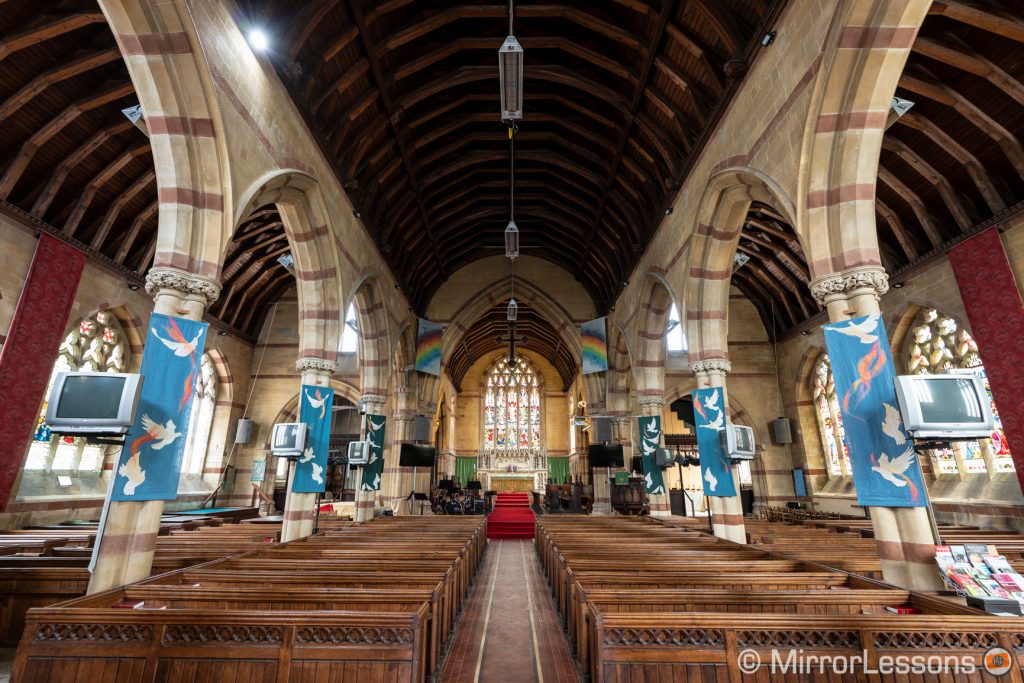
The ZA lens features optical stabilisation. When used with a body that has IBIS, the OSS is combined with 3 axes on the sensor. With a camera that lacks in-body stabilisation, the lens provides good stability down to half a second at the widest end.

Conclusion
After using these two lenses side by side, it has become clear that the G Master is superior in many ways: not only does the faster aperture give you more room to play with shallow depth of field and low light situations, but it also has superior sharpness in the corners and more precise zoom and focus rings. It is more expensive but you get better quality as a result.
The Zeiss lens has the advantage of being smaller and includes optical stabilisation, something to consider if you plan to use it on an older A7 camera that lacks in-body stabilisation. Sharpness at the centre is comparable to the Sony GM but corner sharpness is not at the same level. It is much more affordable though and that certainly isn’t a minor point in its favour.
Choose the Sony 16-35mm f2.8 GM if you:
- want better sharpness in the corners
- want the 2.8 aperture for more shallow depth of field and low light work
- you want more precise zoom and focus rings for manual focus or video use, with less focus breathing
Choose the Zeiss 16-35mm f4 ZA if:
- you want a smaller lens
- you need optical stabilisation for use on a non-stabilised camera
- you’re happy spending almost half the price
Check price of the Sony FE 16-35mm f2.8 GM on:
Amazon | Amazon UK | B&H Photo | eBay
Check price of the Sony FE 16-35mm f4 ZA OSS on:
Amazon | Amazon UK | B&H Photo | eBay
You may also be interested in:
Sample images
FE 16-35mm f4 ZA OSS
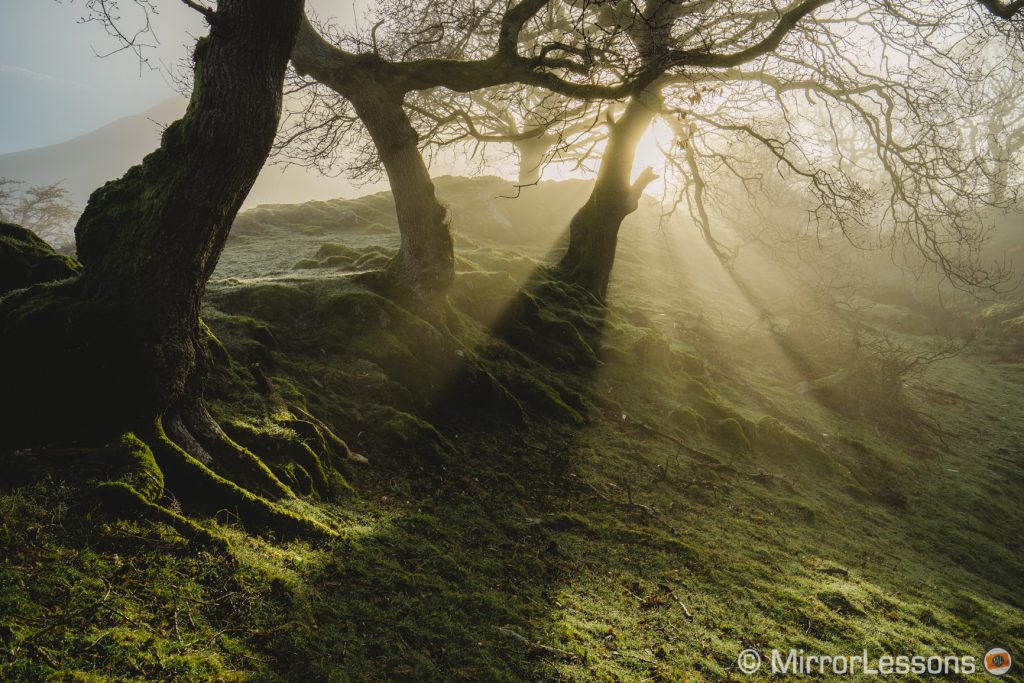





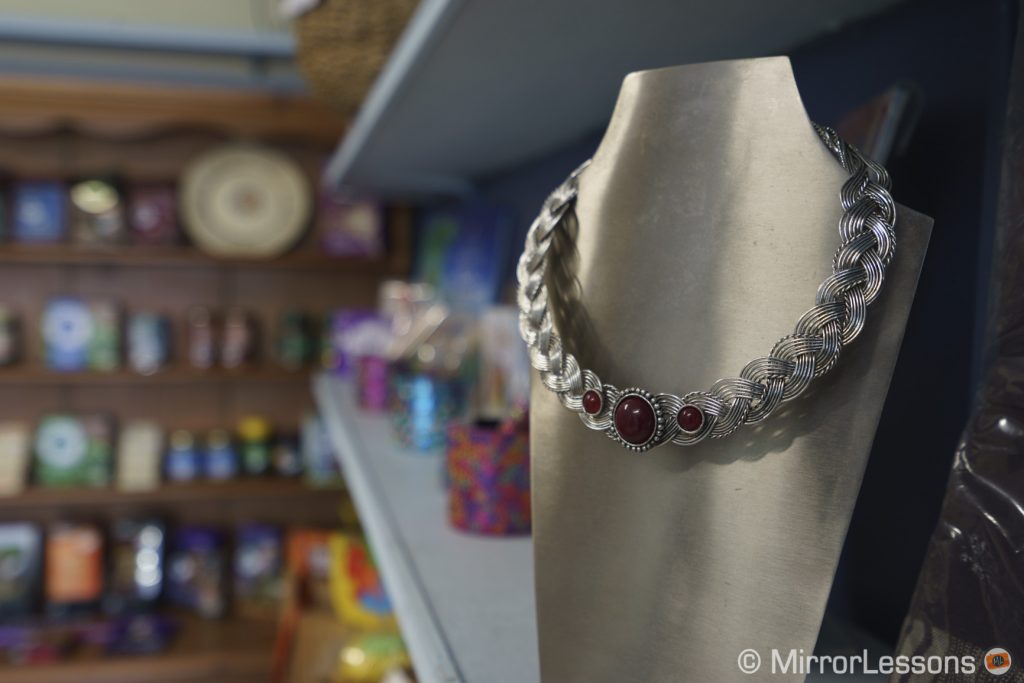

FE 16-35mm f2.8 GM






